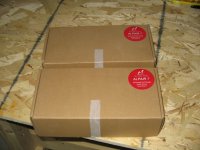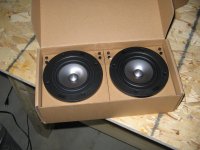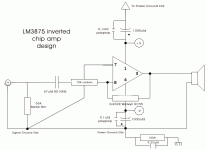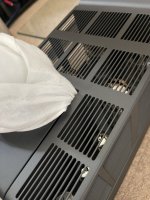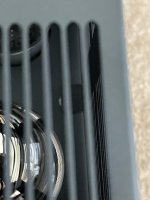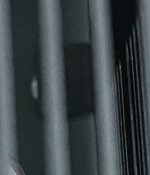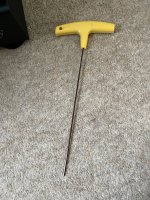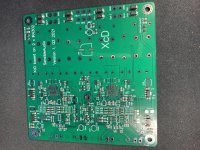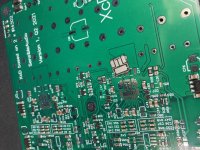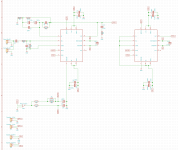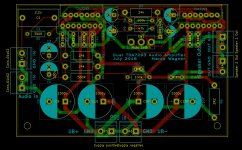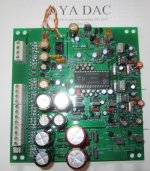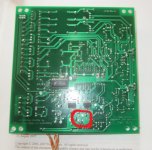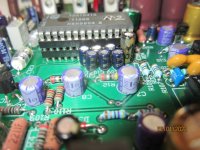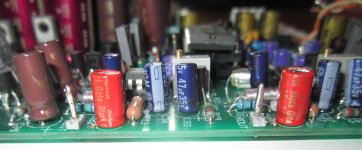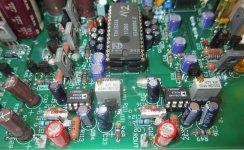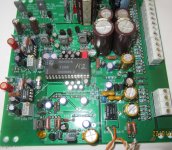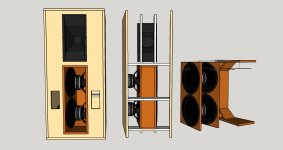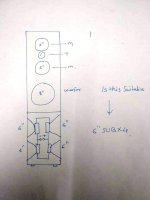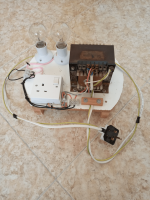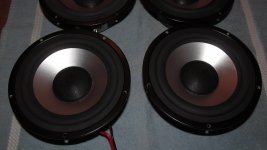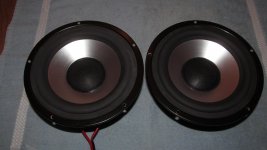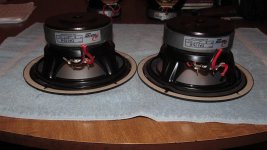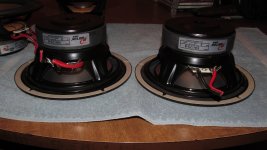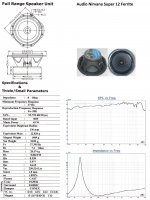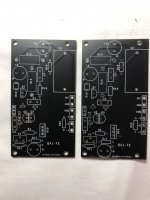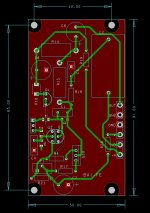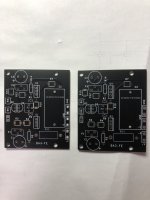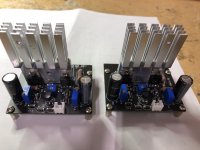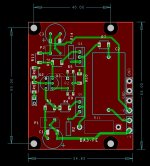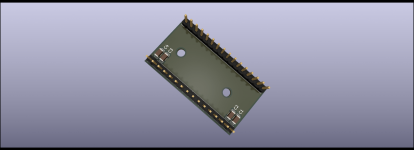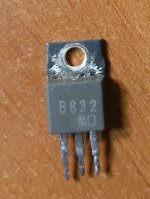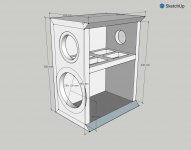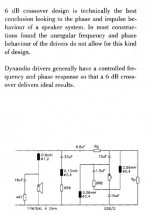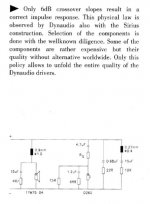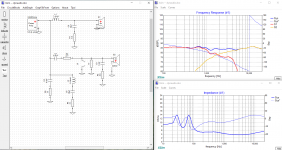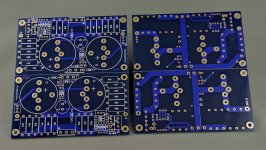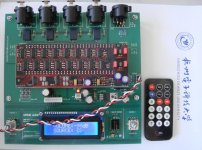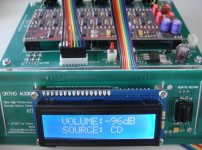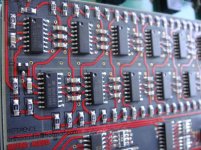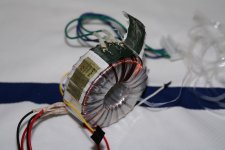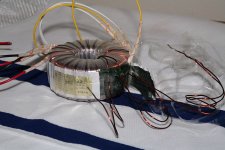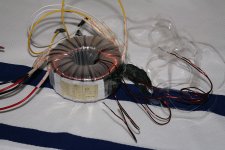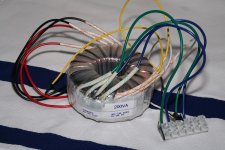You are using an out of date browser. It may not display this or other websites correctly.
You should upgrade or use an alternative browser.
You should upgrade or use an alternative browser.
Filters
Show only:
For Sale Nikon1975 Garage Sales
20220129 NEW ITEM
18) SUMR 50VA Primary: 2X115V Secondary: 2x40V Price: 25e
20220121 Post updated with what is still available.
As you know, projects not always go in the direction you planned. So I have some parts that are looking for a new home. Feel free to make me offers, as I am not 100% sure if the asked price is fair.
3) O2 Headphone amp (PCB) Price 4e
4) Cviller CRC PSU with 8x27ku Price 30e
6) Salas LV Shunt Regulator + and - 15V assembled Price 50e
8) Quancho Heater PSU PCB Price 5e
9) Hans Pollak volume control (4 relays version) for Bruno Putzey Balanced preamp (5 PCBs) Price 3e
11) SainSmart Signal Relay board 8 channels (Good for 4 inputs balanced stereo input switch). Price 10e
12) SainSmart Signal Relay board 4 channels (Good for 4 inputs SE stereo input switch) Price 5e
13) F5H headphone amp PCB from Prasi Price 3e (one channel, there are two designs)
I'll post pictures in the next messages.
18) SUMR 50VA Primary: 2X115V Secondary: 2x40V Price: 25e
20220121 Post updated with what is still available.
As you know, projects not always go in the direction you planned. So I have some parts that are looking for a new home. Feel free to make me offers, as I am not 100% sure if the asked price is fair.
3) O2 Headphone amp (PCB) Price 4e
4) Cviller CRC PSU with 8x27ku Price 30e
6) Salas LV Shunt Regulator + and - 15V assembled Price 50e
8) Quancho Heater PSU PCB Price 5e
9) Hans Pollak volume control (4 relays version) for Bruno Putzey Balanced preamp (5 PCBs) Price 3e
11) SainSmart Signal Relay board 8 channels (Good for 4 inputs balanced stereo input switch). Price 10e
12) SainSmart Signal Relay board 4 channels (Good for 4 inputs SE stereo input switch) Price 5e
13) F5H headphone amp PCB from Prasi Price 3e (one channel, there are two designs)
I'll post pictures in the next messages.
New products from Sakura Systems
Kore-eda Amplifiers -- preamp and power amp, both are chip-based design. How about?
http://www.sakurasystems.com/products/koreeda.html
http://www.sakurasystems.com/products/koreeda.html
Elements between PCB-GND and Mains Earth in SolidState Power Amps - How to Calculate?
- Solid State
- 40 Replies
Well, the best way it is, to avoid the use of the mains earth and thus this additional components.
In case of dual monaural constructions the RCA input connector is now mounted without isolation to the chassis envelope.
Unfortunately most transformers require mandatory the use of the mains earth for safety reasons.
This means at the same time, I have to introduce components between the metal chassis envelope and the GND from main board/star GND from power supply (to avoid double grounding).
I observe a wide range of different ways in commercial amp products - each manufacturer chooses other components resp. values resp. topologies.
Sometimes only a resistor (10 ohms until 1000 ohms) is present, somtimes only a MKT cap (10 nF until 1 uF), and sometimes both of them (the attached gainclone example with LM3875 e. g. uses a 100 ohms resistor and a cap with 0,22uF).
Also the wattage and the kind of the cap are highly variable (very small until very large).
The choosen position at the chassis and at the PCB are also different. Sometimes near the input GND, sometimes near the output (loudspeaker-terminals) and sometimes at the power caps (star ground).
Also, the thickness and the length of the connecting cables between the main-PCB GND and the chassis (over the mentioned components) are very different. In any cases I did observe an extremely thin wire.
Follow question rises up:
How did I calculate this devices between chassis/mains earth and secundary GND for lowest possible hum (highest possible signal to noise ratio) so as highest possible reliability and where are to find papers and test reports in this matter?
In case of dual monaural constructions the RCA input connector is now mounted without isolation to the chassis envelope.
Unfortunately most transformers require mandatory the use of the mains earth for safety reasons.
This means at the same time, I have to introduce components between the metal chassis envelope and the GND from main board/star GND from power supply (to avoid double grounding).
I observe a wide range of different ways in commercial amp products - each manufacturer chooses other components resp. values resp. topologies.
Sometimes only a resistor (10 ohms until 1000 ohms) is present, somtimes only a MKT cap (10 nF until 1 uF), and sometimes both of them (the attached gainclone example with LM3875 e. g. uses a 100 ohms resistor and a cap with 0,22uF).
Also the wattage and the kind of the cap are highly variable (very small until very large).
The choosen position at the chassis and at the PCB are also different. Sometimes near the input GND, sometimes near the output (loudspeaker-terminals) and sometimes at the power caps (star ground).
Also, the thickness and the length of the connecting cables between the main-PCB GND and the chassis (over the mentioned components) are very different. In any cases I did observe an extremely thin wire.
Follow question rises up:
How did I calculate this devices between chassis/mains earth and secundary GND for lowest possible hum (highest possible signal to noise ratio) so as highest possible reliability and where are to find papers and test reports in this matter?
Attachments
Mission Cyrus Two - help identify what's wrong..
- By Almiscarado
- Solid State
- 41 Replies
Hi everyone!
Sometimes, and specially when we do not have a lot of money to spend on Hifi, we believe we might get lucky and do a good deal.
I saw a Cyrus two on a street market, for not a high price, and unable to test it I decided to take the risk and brought it home for a somewhat small amount of money.
I was no lucky. 🙁
What I check out so far:
No sound from speakers; Sound ok on one headphone channel, distorted (kind of like electronic trash noise on the other channel) on the other.
I know some electronic basics, I am ok removing and replacing components, but I am awfull identifying what is wrong, so maybe I can get some help from fellow DIYaudio users...
Nothing looks burned inside, and both the fuses look ok.
Where should I begin? 😱
All the help would be helpfull so I dont stay with an expensive boat anchor 😛
Best,
Sergio
Sometimes, and specially when we do not have a lot of money to spend on Hifi, we believe we might get lucky and do a good deal.
I saw a Cyrus two on a street market, for not a high price, and unable to test it I decided to take the risk and brought it home for a somewhat small amount of money.
I was no lucky. 🙁
What I check out so far:
No sound from speakers; Sound ok on one headphone channel, distorted (kind of like electronic trash noise on the other channel) on the other.
I know some electronic basics, I am ok removing and replacing components, but I am awfull identifying what is wrong, so maybe I can get some help from fellow DIYaudio users...
Nothing looks burned inside, and both the fuses look ok.
Where should I begin? 😱
All the help would be helpfull so I dont stay with an expensive boat anchor 😛
Best,
Sergio
new DS18 Pro D1 2" compression driver - to good to be true?
it's $55 MSRP, it has extended HF response and high power handling, what's the catch?
https://ds18.com/collections/pro-au...er-with-2-phenolic-voice-coil-500-watts-8-ohm
https://ds18.com/collections/pro-au...er-with-2-titanium-voice-coil-500-watts-8-ohm
looks like it could be run very wide-band for domestic settings
https://ds18.com/collections/pro-au...er-with-2-phenolic-voice-coil-500-watts-8-ohm
https://ds18.com/collections/pro-au...er-with-2-titanium-voice-coil-500-watts-8-ohm
looks like it could be run very wide-band for domestic settings
How to remove the cage grill from Quad II 80
- By Htmad
- Tubes / Valves
- 1 Replies
Hi,
I’ve just purchased a pair of Quad II 80. While unpacking, one of the protection covers for the transformers got stuck and started to break. Now to remove it completely and safely I have to remove the cage grill protecting the valves.
The manual doesn’t say anything about how to remove the cage. I guess that the long tool provided (see attached photo) is to be used, but if the screws shown in the attached photo are those to remove I do not see how it can be done, as the screws are covered by a small metal plate.
Does anybody know how to do it?
Thanks
I’ve just purchased a pair of Quad II 80. While unpacking, one of the protection covers for the transformers got stuck and started to break. Now to remove it completely and safely I have to remove the cage grill protecting the valves.
The manual doesn’t say anything about how to remove the cage. I guess that the long tool provided (see attached photo) is to be used, but if the screws shown in the attached photo are those to remove I do not see how it can be done, as the screws are covered by a small metal plate.
Does anybody know how to do it?
Thanks
Attachments
Chas F3 clone boards
Decided this is an amp that may not be for me, so I offer the complete set of boards here.
All came direct from Chas, the 2 amplifier boards are from his early batch and so are not ENIG, but the rest are from his production run and so are ENIG.
Looking to get back what I paid so they are £40
Thanks

All came direct from Chas, the 2 amplifier boards are from his early batch and so are not ENIG, but the rest are from his production run and so are ENIG.
Looking to get back what I paid so they are £40
Thanks
BYW29 instead of MUR860
hi,
i've found some byw29s at nearly no cost.. may i use it in gainclone power supply instead of mur860s? is there any drawback or advantages over murs?
thanks in advance..
i've found some byw29s at nearly no cost.. may i use it in gainclone power supply instead of mur860s? is there any drawback or advantages over murs?
thanks in advance..
Soldering IR4302 by hand .... anyone tried??
- By Baldin
- Construction Tips
- 23 Replies
Have gotten some boards made for a 4 channel amp based on IR4302.
JLCPCB do not stock IR4302 so could unfortunately not get these mounted.
So have purchased some chips and I'm ready to try mu luck.
But how to best go about it 😕
I do not have a stensil for the IC so can't just use that and some reflow solder paste.
The PCB is HASL - Hot Air Solder Leveling, treated from manufactory.
Of course step 1 is to thoroughly clean both pcb and chip with Isopropyl alcohol.
I could give the inner pads, the large ones a very thin layer of solder paste, with a toothpick or something.
I could then apply all other pads with liquid solder flux.
Should I also flux the chip?
Placing the chip as precise as possible and apply heat with a hot air solder gun.
Will the chip move into place by it self??
I'm thinking that soldering the small outer pads with a pointed solder iron after is the way to go ??
Any good suggestions, by some with real experience in soldering items like this??
I'm used to solder components down to 0603, MS8, TSSOP, SOP etc.
Thanks in advance and kind regards Baldin
JLCPCB do not stock IR4302 so could unfortunately not get these mounted.
So have purchased some chips and I'm ready to try mu luck.
But how to best go about it 😕
I do not have a stensil for the IC so can't just use that and some reflow solder paste.
The PCB is HASL - Hot Air Solder Leveling, treated from manufactory.
Of course step 1 is to thoroughly clean both pcb and chip with Isopropyl alcohol.
I could give the inner pads, the large ones a very thin layer of solder paste, with a toothpick or something.
I could then apply all other pads with liquid solder flux.
Should I also flux the chip?
Placing the chip as precise as possible and apply heat with a hot air solder gun.
Will the chip move into place by it self??
I'm thinking that soldering the small outer pads with a pointed solder iron after is the way to go ??
Any good suggestions, by some with real experience in soldering items like this??
I'm used to solder components down to 0603, MS8, TSSOP, SOP etc.
Thanks in advance and kind regards Baldin
Attachments
Modifying headphone output LM mini84ia
- By Balthazarp
- Tubes / Valves
- 7 Replies
Hi!
I know the Line Magnetic LM-mini84ia is not a diy amplifier, but I hope to qualify to the forum by wanting to modify said item. Admin is free to remove and tell me to F off if I'm stepping out of bounds! I'm also not a native english speaker.
I recently bought a used Line Magnetic LM-mini84ia integrated/headphone amp. The thing is the headphone output is really bad, as soon as the volume goes up to a little louder listening levels I get massive amounts of distortion. IEMs works better than my headphones (dan clark aeon 2C). I know the headphones require a little more power so I think the juice is running out.
I open the back of the amplifier and found a 470 Ohm resistor inline with headphone socket.
The speakerjacks sounds really good and provides a lot of power, I would like the same in my headphones 🙂
Somebody have any insight to what kind of modifications I can make (possibly outsource) to not restrict power to headphone jack?
I have not been able to find schematics to the amp in question.
Regards Jakob
I know the Line Magnetic LM-mini84ia is not a diy amplifier, but I hope to qualify to the forum by wanting to modify said item. Admin is free to remove and tell me to F off if I'm stepping out of bounds! I'm also not a native english speaker.
I recently bought a used Line Magnetic LM-mini84ia integrated/headphone amp. The thing is the headphone output is really bad, as soon as the volume goes up to a little louder listening levels I get massive amounts of distortion. IEMs works better than my headphones (dan clark aeon 2C). I know the headphones require a little more power so I think the juice is running out.
I open the back of the amplifier and found a 470 Ohm resistor inline with headphone socket.
The speakerjacks sounds really good and provides a lot of power, I would like the same in my headphones 🙂
Somebody have any insight to what kind of modifications I can make (possibly outsource) to not restrict power to headphone jack?
I have not been able to find schematics to the amp in question.
Regards Jakob
Voltage controlled resistance
Hi,
I've recently started looking into build analog synth modules. The biggest challenge for me is to control resistance with a CV. For example, if I wanna build a simple RC low pass filter and want to control it with a varying voltage, I would need something like a Vactrol. I understand I can build my own, or I could buy them (very expensive). But something tells me I'm looking the wrong way.
Is a Vactrol really the only way to control an analog low pass filter? The fact that this part is hard to find, does it mean that everything is just digital now?
and if I do go to digital, I see that 12bit is quite common for an ADC and DAC. 24bit is hard to find and usually only available in high end chips. So does this mean that most DIY are done with 12bit? Is that acceptable in most cases? I know this is a subjective question, but I just wanna know if "most" people just go ahead with 12bit or if it is very unpopular.
Thanks.
I've recently started looking into build analog synth modules. The biggest challenge for me is to control resistance with a CV. For example, if I wanna build a simple RC low pass filter and want to control it with a varying voltage, I would need something like a Vactrol. I understand I can build my own, or I could buy them (very expensive). But something tells me I'm looking the wrong way.
Is a Vactrol really the only way to control an analog low pass filter? The fact that this part is hard to find, does it mean that everything is just digital now?
and if I do go to digital, I see that 12bit is quite common for an ADC and DAC. 24bit is hard to find and usually only available in high end chips. So does this mean that most DIY are done with 12bit? Is that acceptable in most cases? I know this is a subjective question, but I just wanna know if "most" people just go ahead with 12bit or if it is very unpopular.
Thanks.
HiFi Prosound stuff for sale...
- By wolf_teeth
- Swap Meet
- 1 Replies
For those that knew him, these items were my friend Matt's. His mother is starting to unload some more of his audio things. The Speakers are the main items going right now. Locale is NE Indiana.
2x JBL 2246 (2" exit) with (pretty sure) Radian diaphragms. They have been restored by Matt. He purchased new rubber magnet rings and sticker decals. They have aluminum non-faceted horns (8" x 17"?) and are mounted with magnet support brackets. I cannot find the horns he used in an online search. If there is anyone interested, I will try and find out what domes are actually in these. I will need to take the caps off to find out for sure. I see these listed for $839 when PE sold them. Asking $600/ea, please make offer if interested, no low-balls will be entertained. Pictures and more info on request. Shipping is plausible, but realize these are 33# for drivers alone.
2x Cerwin Vega 18" carpeted pro-sub cabs 2' x 2' x 2' est, fitted with B&C 18TBX100 18" subwoofers. Obviously these cannot be shipped. I am willing to drive a little or make arrangements if possible. InDIYana 2022 delivery to event also possible. Pole sockets installed. Asking $600 each.
2x Cerwin Vega 15" 'tops' cabs retrofitted with 15" Selenium woofers with smooth response. Original tweeters are gone. Hole is present for 1" exit and horn. Original xovers are still installed. $300/each. These are also too large to ship. Poles included. Cabs have reinforced handles, added bracing, vinyl sheet damping and stuffing, as well as Speakon plates installed. InDIYana 2022 deliery et al from previous listing also applies here.
Please let me know if interested,
Wolf
2x JBL 2246 (2" exit) with (pretty sure) Radian diaphragms. They have been restored by Matt. He purchased new rubber magnet rings and sticker decals. They have aluminum non-faceted horns (8" x 17"?) and are mounted with magnet support brackets. I cannot find the horns he used in an online search. If there is anyone interested, I will try and find out what domes are actually in these. I will need to take the caps off to find out for sure. I see these listed for $839 when PE sold them. Asking $600/ea, please make offer if interested, no low-balls will be entertained. Pictures and more info on request. Shipping is plausible, but realize these are 33# for drivers alone.
2x Cerwin Vega 18" carpeted pro-sub cabs 2' x 2' x 2' est, fitted with B&C 18TBX100 18" subwoofers. Obviously these cannot be shipped. I am willing to drive a little or make arrangements if possible. InDIYana 2022 delivery to event also possible. Pole sockets installed. Asking $600 each.
2x Cerwin Vega 15" 'tops' cabs retrofitted with 15" Selenium woofers with smooth response. Original tweeters are gone. Hole is present for 1" exit and horn. Original xovers are still installed. $300/each. These are also too large to ship. Poles included. Cabs have reinforced handles, added bracing, vinyl sheet damping and stuffing, as well as Speakon plates installed. InDIYana 2022 deliery et al from previous listing also applies here.
Please let me know if interested,
Wolf
Split wire into 8
- By bobdebouwer
- Construction Tips
- 4 Replies
Hi,
I have one power supply (smps3ka400) which can be used to power 8 amplifier boards. There are as standard only 3 connectors 'out' on the board. I thus have to split anyway.
I thought the cleanest way would be to take one out and split this into the 8 amplifier boards. I saw somewhere in a build a board where he put 1 wire in and 8 came out. I need a huge "wago" splitter in fact.
I would like it to be safe off course, clean and safe...
Tanks in advance!
I have one power supply (smps3ka400) which can be used to power 8 amplifier boards. There are as standard only 3 connectors 'out' on the board. I thus have to split anyway.
I thought the cleanest way would be to take one out and split this into the 8 amplifier boards. I saw somewhere in a build a board where he put 1 wire in and 8 came out. I need a huge "wago" splitter in fact.
I would like it to be safe off course, clean and safe...
Tanks in advance!
Advice to Prevent Seizing
- By WntrMute2
- Construction Tips
- 16 Replies
Somewhat basic question. I have some tube pin cooler connectors that keep seizing the internal threads. I believe they are aluminum and the screws seem to chrome(ish) plated brass. After a month or so of running for a few hours per day, the screws are impossible to remove without snapping the heads off rendering them useless. Interestingly, the steel set screws that clamp the parts on to the tube pins seem to not be effected. Usually, I can back the screws in question out about 1/2 a turn before the problem sets in. I could try some aluminum screws and I have some anti-seize compound I could try but any other ideas?
The connectors in question are expensive and hard to source.

The connectors in question are expensive and hard to source.
New to SPICE, errors simulating LM3886
- By srdjant
- Software Tools
- 19 Replies
Hi there,
I'm very new to SPICE simulation.
I'm getting this when trying to simulate my circuit in KiCad:
I'm not sure if I can safely ignore the warnings for the connectors.
The Zener diode model might be relevant, as it's connected to pin 8 of the LM3886 (U1).
Really not sure what the -v model warnings are about. I've got a VEE component added, and global label of "-V" to make connections easier.
Anyone able to shed some pointers for me please?
I'm very new to SPICE simulation.
I'm getting this when trying to simulate my circuit in KiCad:
Code:
warning, can't find model -v
warning, can't find model zf16v
warning, can't find model -v
Circuit: KiCad schematic
Error on line 3 :
u1 +v nc_01 out -v +v nc_02 powerground net-_d3-pad1_ net-_cf1-pad1_ net-_cc1-pad1_ nc_03 lm3886
Unable to find definition of model -v - default assumed
unknown parameter (+v)
Error on line 13 :
jout1 out_t speakerground conn_01x03
Unable to find definition of model - default assumed
Error on line 18 :
d3 net-_d3-pad1_ net-_cm1-pad2_ zf16v
Unable to find definition of model zf16v - default assumed
Error on line 27 :
joutsingle1 out powerground conn_01x03
Unable to find definition of model - default assumed
Error on line 29 :
jinput2 in+ signalground conn_01x02
Unable to find definition of model - default assumed
Error on line 30 :
jpower1 +v speakerground powerground -v conn_01x04
Unable to find definition of model -v - default assumed
unknown parameter (conn_01x04)
Background thread stopped with timeout = 0
Doing analysis at TEMP = 27.000000 and TNOM = 27.000000
Fatal error: tp_in_gnd1: transmission line z0 must be given
doAnalyses: no such parameter on this device
run simulation(s) abortedThe Zener diode model might be relevant, as it's connected to pin 8 of the LM3886 (U1).
Really not sure what the -v model warnings are about. I've got a VEE component added, and global label of "-V" to make connections easier.
Anyone able to shed some pointers for me please?
Attachments
TDA7293 Amplifier Design Blows Up Instantly
Hi everyone,
about 2 months ago I decided to take on the project of designing my own amplifier which is supposed to be driving my subwoofer in the future.
The circuit I chose to use is a dual TDA7293 parallel design.
I have attached my circuit diagram to this post. Please be aware, that I have already figured out and fixed the follow mistakes made:
- Capacitors C10 and C10P1 (1000u smoothing caps in negative supply rail) are polarized in the wrong direction, have turned them around on PCB
- Capacitor C3 polarized in wrong direction as well
I have also attached an image of my PCB layout.
The power supply is a 24-0-24V toroidal transformer with a rectifier board attached to it (which did not have any problems and has worked perfectly fine from the beginning). It has 2 63V 10.000uF caps per rail.
Now the problems started when I first turned on my amplifier board.
On the first try I had both TDA7293 chips soldered to the board. I have shorted the audio input signal to ground.
In the instant I turned on power, both chipamps literally exploded, meaning they blew off part of the black cover of the IC.
Ofter the past weeks I quadruple checked again for mistakes in my layout and then soldered on a new TDA chip (this time only the one in the master position, because I had heard of the possibility of instability in parallel mode).
But the same thing happened again, instantly after powering on, a flame shoots out the bottom of the IC and that's it...
My last hope are now the great people in this forum who might be able to help me figuring out, what the problem with my amplifier design is.
I'm looking forward to your responses and suggestions and please don't hesitate to ask for any more info required to assess the situation.
about 2 months ago I decided to take on the project of designing my own amplifier which is supposed to be driving my subwoofer in the future.
The circuit I chose to use is a dual TDA7293 parallel design.
I have attached my circuit diagram to this post. Please be aware, that I have already figured out and fixed the follow mistakes made:
- Capacitors C10 and C10P1 (1000u smoothing caps in negative supply rail) are polarized in the wrong direction, have turned them around on PCB
- Capacitor C3 polarized in wrong direction as well
I have also attached an image of my PCB layout.
The power supply is a 24-0-24V toroidal transformer with a rectifier board attached to it (which did not have any problems and has worked perfectly fine from the beginning). It has 2 63V 10.000uF caps per rail.
Now the problems started when I first turned on my amplifier board.
On the first try I had both TDA7293 chips soldered to the board. I have shorted the audio input signal to ground.
In the instant I turned on power, both chipamps literally exploded, meaning they blew off part of the black cover of the IC.
Ofter the past weeks I quadruple checked again for mistakes in my layout and then soldered on a new TDA chip (this time only the one in the master position, because I had heard of the possibility of instability in parallel mode).
But the same thing happened again, instantly after powering on, a flame shoots out the bottom of the IC and that's it...
My last hope are now the great people in this forum who might be able to help me figuring out, what the problem with my amplifier design is.
I'm looking forward to your responses and suggestions and please don't hesitate to ask for any more info required to assess the situation.
Attachments
-
Poll
Wolverine Project - Poll for shipping location
- By stuartmp
- Group Buys
- 32 Replies
Hi Guy's
To try and keep the shipping costs for the pcb's as low as possible we are going to offer two shipping locations.
Please indicate below which is going to be the closest shipping location for you.
To try and keep the shipping costs for the pcb's as low as possible we are going to offer two shipping locations.
Please indicate below which is going to be the closest shipping location for you.
Tale of two USB isolators
- By tvrgeek
- Digital Source
- 22 Replies
Guessing on which forum to post this test.
Anyway, looking to see WHY a couple different DACs sound different. This is not a debate if or what, just a measured test.
One thought was how well they rejected USB power or signal noise. So I bought a $12 e-bay special galvanic isolator and the $80 Linear Technology demo board for the LTM2884 module.
Just looking at the 5V line going into the isolator and the 5V coming out:
Cheap board: 5 to 5.5 mV input. 5.5 to 6mV output. Isolated maybe, but not very clean!
LT board, same 5 to 5.5mV input, but .9 mv steady out. Measured with my Fluke as my scope died so can't show fancy pictures of what the noise looks like. Same cable.
Not making claims on audibility, but just objective measures of one aspect.
Curious, my Focusrite I wanted to use for a loopback test does not get recognized with either board, but my other DACs do. Need to figure that out so I can do distortion analysis of the DAC, and not just of the Focusrite. I thought not enough current, but the LT board 5V does not droop, so don't think that is it.
My conclusion: I make no claims about magic sonic improvements, but the LT module works and the Chinese one does not as far as the power line goes. It has what it claims in an AMD chip on it, ADUM3160. IF it is real, it does not do very well on the power side.
More tests to follow if I can get any that are not masked by the Focus rite as the DACS are both cleaner than it is. Just tested with a poured USB hub, and still the PC does not recognize the box. Odd. Going to contact Focus rite.
Note, the AMD chip lists @ $3, the LT module lists @ 40. Maybe a reason 🙂
Anyway, looking to see WHY a couple different DACs sound different. This is not a debate if or what, just a measured test.
One thought was how well they rejected USB power or signal noise. So I bought a $12 e-bay special galvanic isolator and the $80 Linear Technology demo board for the LTM2884 module.
Just looking at the 5V line going into the isolator and the 5V coming out:
Cheap board: 5 to 5.5 mV input. 5.5 to 6mV output. Isolated maybe, but not very clean!
LT board, same 5 to 5.5mV input, but .9 mv steady out. Measured with my Fluke as my scope died so can't show fancy pictures of what the noise looks like. Same cable.
Not making claims on audibility, but just objective measures of one aspect.
Curious, my Focusrite I wanted to use for a loopback test does not get recognized with either board, but my other DACs do. Need to figure that out so I can do distortion analysis of the DAC, and not just of the Focusrite. I thought not enough current, but the LT board 5V does not droop, so don't think that is it.
My conclusion: I make no claims about magic sonic improvements, but the LT module works and the Chinese one does not as far as the power line goes. It has what it claims in an AMD chip on it, ADUM3160. IF it is real, it does not do very well on the power side.
More tests to follow if I can get any that are not masked by the Focus rite as the DACS are both cleaner than it is. Just tested with a poured USB hub, and still the PC does not recognize the box. Odd. Going to contact Focus rite.
Note, the AMD chip lists @ $3, the LT module lists @ 40. Maybe a reason 🙂
Wtd - ATC PA75-314 or Volt 10" & CX220.1
I'm looking for a pair of the following for use in a 2-way design
ATC PA75-314 (STD/Bass)
Volt BM2500.4
Volt BM251.3
Seperately after a pair of Volt CX220.1 too.
ATC PA75-314 (STD/Bass)
Volt BM2500.4
Volt BM251.3
Seperately after a pair of Volt CX220.1 too.
Community speaker rebuild
TLDR;
I would like to build some cabinets for my Community Audio CS70 drivers, which are 4 x 12 and horn/tweeter. I would consider breaking them up, as my previous attempt resulted in very large, heavy boxes. Perhaps into 4 2x12s and tweeter boxes (might look like a reggae system but thats ok in my books) or if there is such a thing as a 4x12 mid/kicker arrangement, that would work.
Any start point for designs much appreciated. Proffesional woodworker, total amateur electro-acoustic phsyician.
------
Long version -
I posted on here a few years ago about a project and got some great advice, so im hoping for more.
I rebuilt some community audio csx70's, which have 4 12" drivers each, a compression horn and tweeters.
I am a joiner so I have a workshop and building boxes is very easy, however i know next to nothing about speaker design, so last time Bob4 amongst others kindly took me under their wise wings, and i came up with a PPSL design to house the 12"s with the horn on top. See attached.
So, initially i was quite happy with them. Especially once I found a pair of brand new 15"s in a charity shop for £20, for which i immediately made a dual 15 PPSL cabinet. Using a DSP to Xover everything, sounding much better as a 2.1 system. Especially as the speakers and cabinets cost me very little.
However, the top boxes are very large, and heavy, and i think on reflection dont do such a great job. They have a very narrow field, seem to be missing fullness and struggle to give decent warmth/punch. I have a reference mic and software but have yet to set the system up for proper testing. Must do that sometime, but parties tend to be waiting for music.
So especially now that I have invested in the expensive parts of the amps, dsp, graphic eq and various other stuff, i feel like id like to rebuild the top boxes in a better fashion. I might also sell the original sub to finance 2 pairs of matching drivers, so I can have subs both sides.
------
Anyway i appreciate this might be an annoying newb question but any thoughts most welcome!
I would like to build some cabinets for my Community Audio CS70 drivers, which are 4 x 12 and horn/tweeter. I would consider breaking them up, as my previous attempt resulted in very large, heavy boxes. Perhaps into 4 2x12s and tweeter boxes (might look like a reggae system but thats ok in my books) or if there is such a thing as a 4x12 mid/kicker arrangement, that would work.
Any start point for designs much appreciated. Proffesional woodworker, total amateur electro-acoustic phsyician.
------
Long version -
I posted on here a few years ago about a project and got some great advice, so im hoping for more.
I rebuilt some community audio csx70's, which have 4 12" drivers each, a compression horn and tweeters.
I am a joiner so I have a workshop and building boxes is very easy, however i know next to nothing about speaker design, so last time Bob4 amongst others kindly took me under their wise wings, and i came up with a PPSL design to house the 12"s with the horn on top. See attached.
So, initially i was quite happy with them. Especially once I found a pair of brand new 15"s in a charity shop for £20, for which i immediately made a dual 15 PPSL cabinet. Using a DSP to Xover everything, sounding much better as a 2.1 system. Especially as the speakers and cabinets cost me very little.
However, the top boxes are very large, and heavy, and i think on reflection dont do such a great job. They have a very narrow field, seem to be missing fullness and struggle to give decent warmth/punch. I have a reference mic and software but have yet to set the system up for proper testing. Must do that sometime, but parties tend to be waiting for music.
So especially now that I have invested in the expensive parts of the amps, dsp, graphic eq and various other stuff, i feel like id like to rebuild the top boxes in a better fashion. I might also sell the original sub to finance 2 pairs of matching drivers, so I can have subs both sides.
------
Anyway i appreciate this might be an annoying newb question but any thoughts most welcome!
Attachments
LTSPICE OP ANALYSIS
- By sb****33
- Solid State
- 2 Replies
I couldn't post a thread on LTSPICE group about the subject, I'm too stupid to do so.
So I ask here, sorry.
I can't understand why "changing beta of a NPN BJT" does globally nothing about the collector current although it does in the real world.
So I ask here, sorry.
I can't understand why "changing beta of a NPN BJT" does globally nothing about the collector current although it does in the real world.
Long pipe to sequester rear wave
- By bentoronto
- Subwoofers
- 34 Replies
Nearly all of this forum is devoted to the problem of sequestering the rear wave of Rice-Kellogg drivers and without adding distortion to the front wave. Although it is inept engineering, almost all subs have resonances within their passbands.
The challenge arises since we are trying to move air using an inconceivably ill-matched heavier - but necessarily stiff - cone assembly, with ESLs and true horns excepted. And given the geometry, it is barely feasible to use an enclosure to separate rear waves from front waves without modifying the driver behaviour - with IBs excepted.
Using a long pipe to sequester the rear wave, such as my 17-foot thread has the following advantages.
1. If typically stuffed, no sensible resonance within the passband and good transient behaviour.
2. Sounds from the port are comparable to a fuzzy distance of about 24 feet and therefor do not peremptorily interact with the front wave except in a fuzzy way in a room.
3. Lowest frequencies coming from the exit port add to the FR and enable efficiency esp at low frequencies and exceptional low and sub-sonic bass.
A disadvantage, at least for my sub, is that it's about 13 cu feet, although it has only a 17 x 17 inch footprint. Also, more complex carpentry.
While folded 17-foot pipes are not for everybody, my point is that there hasn't been nearly enough creativity in addressing the rear wave problem. There are a familiar handful of enclosure archetypes that are seen in slight variation and driven by T/S models. For some reason people believe the silly "Iron Law". But more imagination would be nice.
B.
The challenge arises since we are trying to move air using an inconceivably ill-matched heavier - but necessarily stiff - cone assembly, with ESLs and true horns excepted. And given the geometry, it is barely feasible to use an enclosure to separate rear waves from front waves without modifying the driver behaviour - with IBs excepted.
Using a long pipe to sequester the rear wave, such as my 17-foot thread has the following advantages.
1. If typically stuffed, no sensible resonance within the passband and good transient behaviour.
2. Sounds from the port are comparable to a fuzzy distance of about 24 feet and therefor do not peremptorily interact with the front wave except in a fuzzy way in a room.
3. Lowest frequencies coming from the exit port add to the FR and enable efficiency esp at low frequencies and exceptional low and sub-sonic bass.
A disadvantage, at least for my sub, is that it's about 13 cu feet, although it has only a 17 x 17 inch footprint. Also, more complex carpentry.
While folded 17-foot pipes are not for everybody, my point is that there hasn't been nearly enough creativity in addressing the rear wave problem. There are a familiar handful of enclosure archetypes that are seen in slight variation and driven by T/S models. For some reason people believe the silly "Iron Law". But more imagination would be nice.
B.
Converting amps to SMT
- Solid State
- 6 Replies
Trying to convert old TH amp designs to SMT as an exercise, I am looking for surface mount equivalents of 2SA992/2SC1845 and 2SA1381/2SC3503.
The first pair could be replaced by FJV992/1845 kind of hard to find, any better ideas?
No clue for the second pair. Any suggestions? Thanks.
The first pair could be replaced by FJV992/1845 kind of hard to find, any better ideas?
No clue for the second pair. Any suggestions? Thanks.
Dual Side Firing Subwoofer in Tower Speakers
- By naadbrahma
- Multi-Way
- 25 Replies
I plan to design 3 Way Tower Speaker with Side firing (Both Side) Subwoofers !
is it feaseble ?
Connecting Both side subwoofer (6" X 4)in Bipole Configuration is work best?
is it feaseble ?
Connecting Both side subwoofer (6" X 4)in Bipole Configuration is work best?
Attachments
Home made DIY equipment, especially for audio applications.
- By edbarx
- Everything Else
- 2 Replies
Building custom designed amplifiers requires testing the amplifier without damaging it. This is tricky at first, as a newly built amplifier may be out of proper bias by a large margin. For the latter, main power current limiting is essential if not an expensive bench power supply is available. Such a power supply would need to cater for a wide range of voltages and currents and must be capable of supporting shorted outputs. This may seem bad news for potential DIYs but it is not gloomy as it seems, there is a very cost effective way of achieving what a current controlled power supply offers. This humble test is, the famous series light bulb test which uses a filament lamp as opposed to modern bulbs.
Since I built such a protector I am posting it here for any DIY users to illustrate that there is no need of very expensive equipment to make your own testing equipment. Some users have even created an oscilloscope for audio purposes by using a computer's sound card which its own AD converters capable enough for the audio spectrum. In the case of using a computer, it is very important to isolate it to avoid damaging its sensitive circuitry.
I am posting my series light bulb tester which uses a mains transformer to reduce 230V AC to half its value and pass current through a couple of lights before reaching an amplifier under test. Different bulbs with different ratings can be used.
Since I built such a protector I am posting it here for any DIY users to illustrate that there is no need of very expensive equipment to make your own testing equipment. Some users have even created an oscilloscope for audio purposes by using a computer's sound card which its own AD converters capable enough for the audio spectrum. In the case of using a computer, it is very important to isolate it to avoid damaging its sensitive circuitry.
I am posting my series light bulb tester which uses a mains transformer to reduce 230V AC to half its value and pass current through a couple of lights before reaching an amplifier under test. Different bulbs with different ratings can be used.
Attachments
Mini-A boards wanted
- Swap Meet
- 6 Replies
Hi all,
Would anyone have a spare set of mini-aleph boards knocking around in a drawer unused? If you have the BrianGT/chipamp.com ones from years back, even better! and to top off the wishlist, if you also have a PSU board for it, then even better again!
If you're in the EU then even better but I'll take what I can get.
Lastly, if these are not available and Gerbers are available (I did look but without finding any) I'm happy to get some printed and could share them, but obviously protecting IP rights.
Fran
Would anyone have a spare set of mini-aleph boards knocking around in a drawer unused? If you have the BrianGT/chipamp.com ones from years back, even better! and to top off the wishlist, if you also have a PSU board for it, then even better again!
If you're in the EU then even better but I'll take what I can get.
Lastly, if these are not available and Gerbers are available (I did look but without finding any) I'm happy to get some printed and could share them, but obviously protecting IP rights.
Fran
Do you prefer more woofer or more CD/tweeter at xo?
When you’re fine tuning your crossover for that last bit of voicing, do you prefer more woofer or tweeter at the crossover point? Assuming you’re dispersion is good either way, and response isn’t negatively affected. Say add 1db to one side and take away 1db to the other. Which driver is typically the better option to use more of?
So you think you know better?
- By tvrgeek
- Everything Else
- 20 Replies
Please, I am not being snarky here.
I have noticed here and elsewhere some very enlightened ideas on modifying. Even jumping in the old WAYBACK machine to remember the original POOGE in AA and SB.
But, I also see a lot of completely naïve attempts that may be more informed by a golden ear magazine reviewer than by sound engineering. Pun intended.
So, before you take on a mod, which I do encourage:
What do you know, or think you know, the original designer did not? Write it down. Look at it.
What do you think is deficient?
New technology?
Cost?
Different use?
Different feature?
Faulty design?
Packaging to suit your taste?
Can you measure the before and after?
Can you simulate the change?
Where did the idea come from? Understanding of circuit design, or some blogger's hot tip?
Many suggestions are well meaning and at first blush sound reasonable until think about it. $500 for some magic high purity gold plated cryogenically treated bi-wire jumpers? From a real engineering standpoint, a steel nail works just as well. Seriously. Save the cryo-treatment for your bench chisels. It works there following the laws of physics. ( Narlex Rictor, yea they do hold their edge better)
Cap can have issues, but some brand name will magically be better? Why? What value in the cap ( many) are you changing and how does that effect the circuit?
We have real data on resister design. Real data on Johnson noise, inductance and measured distortion, yet I almost never see mods concerning that.
I just saw a post where someone noticed a cap that was apparently hot to the touch. OK, sounds bad to me. Why? Mistake? Cheap? Fault? But the answer was a heat sink.
Another comment on adding I assume some magic film on a cap to reduce vibration or something. But that could be insulating causing a perfectly good component selection to run hotter than designed and fail.
I almost NEVER see anything about improving speaker crossovers, a huge opportunity. Even in the multi-thousand dollar speakers range, I see iron core inductors, too mall gauge inductor wire, wire wound resisters and electrolytic caps. That does not even count the overly simplistic design ignoring critical phase and linearity features the left out due to cost.
All I am saying is to think about what you are doing. There is almost nothing out there some thinking and money can't improve. Just think about it first. Consider where your ideas came from. Who knows, you might discover something really cool! You also might destroy an otherwise decent bit of kit.
This does not even approach the really discussing snake oil. $5,467 for a power cord to plug into what? Yea, 200 feet of Romex to you entrance panel. Several hundred if not thousand feet of aluminum wire to the pole. There are actually reviews testing power cords with claims of sonic magic bringing out details in the music. Really. A year long "shootout" of 27 power cords. How does someone with the where-with-all to buy a $5000 power cord get that kind of money? Clearly not with any common sense.
I saw an "audio grade" outlet for over $1000. Do use the $8 comercial grade outlets. Replace all the 97 cent "spec" grade in you house. Your stereo won't sound better, but less likely to fatigue, cause bad contact, and a fire. And don't use the push in terminals. Of course, don't do his unless you are an electrician, and if so, you know that anyway.
Hey, if you want to paint your amp case hot pink, that is your thing if you think it looks better. That's a valid reason. Not that someone said it would "brighten up the sound"
I have noticed here and elsewhere some very enlightened ideas on modifying. Even jumping in the old WAYBACK machine to remember the original POOGE in AA and SB.
But, I also see a lot of completely naïve attempts that may be more informed by a golden ear magazine reviewer than by sound engineering. Pun intended.
So, before you take on a mod, which I do encourage:
What do you know, or think you know, the original designer did not? Write it down. Look at it.
What do you think is deficient?
New technology?
Cost?
Different use?
Different feature?
Faulty design?
Packaging to suit your taste?
Can you measure the before and after?
Can you simulate the change?
Where did the idea come from? Understanding of circuit design, or some blogger's hot tip?
Many suggestions are well meaning and at first blush sound reasonable until think about it. $500 for some magic high purity gold plated cryogenically treated bi-wire jumpers? From a real engineering standpoint, a steel nail works just as well. Seriously. Save the cryo-treatment for your bench chisels. It works there following the laws of physics. ( Narlex Rictor, yea they do hold their edge better)
Cap can have issues, but some brand name will magically be better? Why? What value in the cap ( many) are you changing and how does that effect the circuit?
We have real data on resister design. Real data on Johnson noise, inductance and measured distortion, yet I almost never see mods concerning that.
I just saw a post where someone noticed a cap that was apparently hot to the touch. OK, sounds bad to me. Why? Mistake? Cheap? Fault? But the answer was a heat sink.
Another comment on adding I assume some magic film on a cap to reduce vibration or something. But that could be insulating causing a perfectly good component selection to run hotter than designed and fail.
I almost NEVER see anything about improving speaker crossovers, a huge opportunity. Even in the multi-thousand dollar speakers range, I see iron core inductors, too mall gauge inductor wire, wire wound resisters and electrolytic caps. That does not even count the overly simplistic design ignoring critical phase and linearity features the left out due to cost.
All I am saying is to think about what you are doing. There is almost nothing out there some thinking and money can't improve. Just think about it first. Consider where your ideas came from. Who knows, you might discover something really cool! You also might destroy an otherwise decent bit of kit.
This does not even approach the really discussing snake oil. $5,467 for a power cord to plug into what? Yea, 200 feet of Romex to you entrance panel. Several hundred if not thousand feet of aluminum wire to the pole. There are actually reviews testing power cords with claims of sonic magic bringing out details in the music. Really. A year long "shootout" of 27 power cords. How does someone with the where-with-all to buy a $5000 power cord get that kind of money? Clearly not with any common sense.
I saw an "audio grade" outlet for over $1000. Do use the $8 comercial grade outlets. Replace all the 97 cent "spec" grade in you house. Your stereo won't sound better, but less likely to fatigue, cause bad contact, and a fire. And don't use the push in terminals. Of course, don't do his unless you are an electrician, and if so, you know that anyway.
Hey, if you want to paint your amp case hot pink, that is your thing if you think it looks better. That's a valid reason. Not that someone said it would "brighten up the sound"
LM334 Working Spice Model
Anybody got one?
Current source, TO-92, 3pin, V+in, Set, V-in
Iset = 227[uA/K] x (273 + 25)[K] / Rset = 67.7 / Rset [mA] ;@25°C
Current source, TO-92, 3pin, V+in, Set, V-in
Iset = 227[uA/K] x (273 + 25)[K] / Rset = 67.7 / Rset [mA] ;@25°C
Tang Band W5-2143 5" Paper Cone Full Range Driver
- By JosephL
- Full Range
- 26 Replies
Previously, for 2018 I built a full range floor stander with help from this forum using the Dayton Audio PS220-8 8" and the contour network from Curt's Singularity. I am very happy with the final result.
For 2020, looking to build a full range bookshelf speaker. I am recycling two way cabinets with a 14 liter internal volume and a front baffle of 168mm.
Tentatively looking at the Tang Band W5-2143 5" Paper Cone Full Range Driver and adding the Dayton Audio DC28FT-8 1-1/8" Silkie tweeter. The only other component being a cap 1uF to 2uF to the tweeter.
Nothing has been ordered. Looking for advice from this forum before proceeding.
Thanks,
Joseph
For 2020, looking to build a full range bookshelf speaker. I am recycling two way cabinets with a 14 liter internal volume and a front baffle of 168mm.
Tentatively looking at the Tang Band W5-2143 5" Paper Cone Full Range Driver and adding the Dayton Audio DC28FT-8 1-1/8" Silkie tweeter. The only other component being a cap 1uF to 2uF to the tweeter.
Nothing has been ordered. Looking for advice from this forum before proceeding.
Thanks,
Joseph
Cathode Feedback and UL switching TL Simple SE.
- Tubelab
- 4 Replies
I dont understand the switching on my TL - SSE. It uses Hammond 1628sea connected to speakers at 8 ohm taps. When I change the Switching positions for UL or CFB I don't hear any significant change in volume or sound quality. I have used DPDT on -off-on switches as suggested in the guides. Is there any risk of damaging the amplifier if it is powered up and used with switch in the wrong pisition. Eg the off / centre position. I only ever run mine with these switches in one of the on positions (up or down position) because I am worried about damaging the OT's or something. As I said though I hear no difference and am wondering if this ia becauae i should be switching between on and off.
Linn Akurate 242 mid dome
- Multi-Way
- 0 Replies
I recently picked up a pair of these and I think the mid dome got jostled during shipping. It buzzes at certain frequencies like the voice Cooke is rubbing.
so, does anyone know if this is repairable? I’ve contacted line about replacements, but am prepared for them to say not available. Can a new dome be put on? Can it be manually repositioned? Does anyone know of an equivent deiver that would work?
help appreciated.
Jeff
so, does anyone know if this is repairable? I’ve contacted line about replacements, but am prepared for them to say not available. Can a new dome be put on? Can it be manually repositioned? Does anyone know of an equivent deiver that would work?
help appreciated.
Jeff
Audio Clubs in North Carolina?
- By NcHalfrican
- Clubs & Events
- 7 Replies
I'm looking for some clubs(or anything of the sort) in North Carolina, preferbly east of Raleigh. I'm on the coast 🙁 Just looking for some experience dudes to learn from 😀
Hi There
- By Adimorsson
- Introductions
- 3 Replies
Hello, I am new here and I am acquainted with the world of audio.
G811 = 811a with/without getter flash
- By Klimon
- Tubes / Valves
- 2 Replies
I'm looking for a durable 811A for a Steve Bench A2 amp build: http://diyaudioprojects.com/mirror/members.aol.com/sbench/a2part3.html
Since the SV572-160 seems to have reliability problems and 811a is equivalent (+ top cap), I'm steered towards NOS G811 (Ryazan or Rzep plants?).
I'm surprised to find tubes with a getter flash and others without, sometimes even in the same auction:

What's the deal and which ones should I get for a solid vacuum when not using them cherry red?
Cheers
Simon
Since the SV572-160 seems to have reliability problems and 811a is equivalent (+ top cap), I'm steered towards NOS G811 (Ryazan or Rzep plants?).
I'm surprised to find tubes with a getter flash and others without, sometimes even in the same auction:
What's the deal and which ones should I get for a solid vacuum when not using them cherry red?
Cheers
Simon
Aleph j pcb
Does anyone have these boards for sale, the store has been out of stock for some time
Thanks
Thanks
TIP147 in place of D45H11?
- By jimk04
- Power Supplies
- 1 Replies
I am building these little 317/337 psus and it calls for D44 and D45 transistors.
Here is the schematic for the positive rail.

I have the D44 but D45 aren't on my horizon and out of stock in my usual suppliers.
Digikey says that TIP132 is an alternative and having some TO220 tip147 here I wondered if they may be suitable? Thabks in advance.
Here is the schematic for the positive rail.
I have the D44 but D45 aren't on my horizon and out of stock in my usual suppliers.
Digikey says that TIP132 is an alternative and having some TO220 tip147 here I wondered if they may be suitable? Thabks in advance.
how do i use WINISD for an openbaffle subwoofer design
- By SNIRAVIV
- Software Tools
- 3 Replies
hello DIYAUDIO, sorry for my English, I will do my best to be clear.
I have a nice open baffle that I built from a GRS 8SW-4. it's good, I like it very much I think it go down to 50-55 HZ.... I never measured its performance. I use it to help my DML speakers get a full range sound. the system is amplified by a small TPA3116D2 amp (AIYIMA A03) and the bass freq is set to about 200 HZ the (knob can go from 40-250HZ)
Now I'm building a new setup of 2.1 and will like to use WINISD these time, using a pair of full range Dayton audio RS100 4 and my good old GRS 8SW-4 open baffle subwoofer. my question is how do I set the open baffle in WINISD? I trayed setting it up as a 99999 liter box and a 100X100CM port 🙂 dose it make sense ?... probably not.... can you advise?
I set a low pass of 100 HZ on the sub and a high pass of 100HZ on the RS100 to simulate the amplifier bass freq knob at 100HZ, is that right to do?




N
I have a nice open baffle that I built from a GRS 8SW-4. it's good, I like it very much I think it go down to 50-55 HZ.... I never measured its performance. I use it to help my DML speakers get a full range sound. the system is amplified by a small TPA3116D2 amp (AIYIMA A03) and the bass freq is set to about 200 HZ the (knob can go from 40-250HZ)
Now I'm building a new setup of 2.1 and will like to use WINISD these time, using a pair of full range Dayton audio RS100 4 and my good old GRS 8SW-4 open baffle subwoofer. my question is how do I set the open baffle in WINISD? I trayed setting it up as a 99999 liter box and a 100X100CM port 🙂 dose it make sense ?... probably not.... can you advise?
I set a low pass of 100 HZ on the sub and a high pass of 100HZ on the RS100 to simulate the amplifier bass freq knob at 100HZ, is that right to do?
N
New Here
- By MarcusJ
- Introductions
- 1 Replies
Thank you for the confirmation. Glad to be here. I've been interested in building speaker cabinets forever. Can anyone here direct me to some links explaining speaker parameters, design considerations, etc? Are there any permanent links in the forum? TIA
MarcusJ
MarcusJ
Dayton DA175-8 Woofers Qty. 4
I have 4 of these woofers for sale. In used but excellent condition.
Dayton Audio DA175-8 7" Aluminum Cone Woofer
$60 takes them. I prefer local pickup.
Menomonee Falls Wi.
Used for about 1 year in a MTM build.
Dayton Audio DA175-8 7" Aluminum Cone Woofer
$60 takes them. I prefer local pickup.
Menomonee Falls Wi.
Used for about 1 year in a MTM build.
Attachments
acoustical bass roll-off
- By R M C S
- Full Range
- 31 Replies
A question for those enamored with full range purity
I have a pair of full range Audio Nirvana Super 12" drivers (ferrite magnets). I adore their outstanding soundstage, coherence, and vocal presence, but am not too thrilled by the sound signature of the bass output. Furthermore, some music I listen to requires powerful sub-bass, which the drivers can never reproduce with authority. And so I was thinking of using a pair of hifi bass drivers that I had laying around. I think I will run them parallel to the woofers, crossed in around 80 Hz and biamped.
Some specs of the Audio Nirvanas. I've attached the specsheet (and VituixCAD files) for your convenience.
Nom. imp: 8 Ω
Fs: 37 Hz
Re: 7.2 Ω
Qts: 0.558
Qms: 5.977
Qes 0.615
Vas: 230,5 L (0.812 ft³)
I am looking for ways to cross the full range drivers at around 80Hz to relieve them of bass duties.
- I have tried some simple crossover networks (p.e. a simple cap in series, LC, RC) but I found that vocals are somehow affected... I suspect it's phase shift bleeding into the midrange. I don't remember which caps I used, I borrowed them from a friend. Besides, I find it difficult to model a proper crossover anyway since the drivers' impedance starts ramping up from 100 Hz and downward (up to 160 Ω at Fs! )
- I have considered an LLPXO (line-level passive crossover) right before the preamp's output resistor. This position for a crossover would dodge the impedance rise of the woofers. Though I'm afraid it would cause the same phase shift in the midrange. Haven't tried it yet though
- Acoustical roll-off... I assume the drivers will sound compressed and constrained when they are positioned in a completely stuffed small (20L) enclosure. What are your experiences with high Vas drivers in small boxes? Bad idea, no?
- Maybe acoustical roll-off by some form of purposeful open baffle phase cancellation?
I think I need some guidance in rolling off the full range drivers in a 'pure' way (i.e. midrange is not affected). Would love to hear you 2 cents on this
Stay safe, kind regards, cheers, Raoul
I have a pair of full range Audio Nirvana Super 12" drivers (ferrite magnets). I adore their outstanding soundstage, coherence, and vocal presence, but am not too thrilled by the sound signature of the bass output. Furthermore, some music I listen to requires powerful sub-bass, which the drivers can never reproduce with authority. And so I was thinking of using a pair of hifi bass drivers that I had laying around. I think I will run them parallel to the woofers, crossed in around 80 Hz and biamped.
Some specs of the Audio Nirvanas. I've attached the specsheet (and VituixCAD files) for your convenience.
Nom. imp: 8 Ω
Fs: 37 Hz
Re: 7.2 Ω
Qts: 0.558
Qms: 5.977
Qes 0.615
Vas: 230,5 L (0.812 ft³)
I am looking for ways to cross the full range drivers at around 80Hz to relieve them of bass duties.
- I have tried some simple crossover networks (p.e. a simple cap in series, LC, RC) but I found that vocals are somehow affected... I suspect it's phase shift bleeding into the midrange. I don't remember which caps I used, I borrowed them from a friend. Besides, I find it difficult to model a proper crossover anyway since the drivers' impedance starts ramping up from 100 Hz and downward (up to 160 Ω at Fs! )
- I have considered an LLPXO (line-level passive crossover) right before the preamp's output resistor. This position for a crossover would dodge the impedance rise of the woofers. Though I'm afraid it would cause the same phase shift in the midrange. Haven't tried it yet though
- Acoustical roll-off... I assume the drivers will sound compressed and constrained when they are positioned in a completely stuffed small (20L) enclosure. What are your experiences with high Vas drivers in small boxes? Bad idea, no?
- Maybe acoustical roll-off by some form of purposeful open baffle phase cancellation?
I think I need some guidance in rolling off the full range drivers in a 'pure' way (i.e. midrange is not affected). Would love to hear you 2 cents on this
Stay safe, kind regards, cheers, Raoul
Attachments
FS: Burning Amp BA-1 Front End PCB with 2x2SJ74
For sale a pair of BA-1 front end pcb designed with 2X 2SJ74 at the input instead of one 2sj109 which you can't find anymore.
You will need 2 matched 2Sj74 for this to work.
I attached the schematic and layout
Price $15USD per pair plus shipping.
You will need 2 matched 2Sj74 for this to work.
I attached the schematic and layout
Price $15USD per pair plus shipping.
Attachments
FS: Burning Amp BA-3 PCB front end
For sale a pair pf BA-3 front end PCB designed by me in a more compact form with some SMD resistors.
I attached the layout and schematic. In one picture I show assembled boards which I can sell if interested.
Price $15USD per pair plus shipping.
I attached the layout and schematic. In one picture I show assembled boards which I can sell if interested.
Price $15USD per pair plus shipping.
Attachments
Low Wattage SE Amp
- By KDonadio
- Tubes / Valves
- 6 Replies
I have seen several low wattage amplifier designs and I am working on one of my own. It is based on the Champ but will use a 6CM6 output tube into a 5500 OPT with a target of 1 watt output. Being mostly familiar with microcontrollers I have never designed a tube amp from the ground up, I do understand the basic concepts though. My question to the experts is how do I change the output power. I know changing the OPT impedance would change the output power. Changing the B+ voltage and bias would as well correct? I am trying to understand the tube plate curves and how to establish this information but could use some guidance. What I came up with for a load line shows a B+ of 180VDC with a bias of 19mA should give me 1W output with a 5.5K OPT.
Luxman going out of phase
- By Chrisr3521
- Solid State
- 21 Replies
I've started working on a Luxman L504, the preamp first. Putting the amp on test first I've noticed that on one channel when using the tone controls the trace moves horizontally like it's going out of phase. Any thoughts?
The schematic is the same, just a few different values.
The schematic is the same, just a few different values.
Attachments
PPI PC1800.2
I have a PPI PC1800.2 that I'm trying to bring back to working condition. Bought it last summer as
"very good condition and running". First install I had that wrong sound from the speakers, minute after ---
the smell from the trunk so we cut of the power removed it and I took it home. Curious if any damage can be visible, I looked
inside and noticed one resistor lifted up and the same one opposite burned on both ends. It's on first two pics:
.
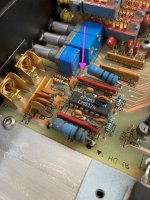
Took it to audio repair expert and after few weeks he fixed it. Replaced the resistors and he got rid of the dust from the inside of the amp.
Back to my man who was doing the install. Couple hours later he called and said that this time it's toasted for real. Before the install I asked him
to check simply with 12v power supply in his workshop. We were able to play the music, green light was on and it switched off without problems.
I looked inside again, the smell was really strong and it looked like charred bomb site. 2nd pair of pics:
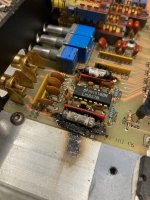
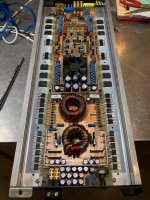
Took it again to the expert where he said that it looks like I have some issue with the ground wire. He mentioned that before at the first repair
and didn't even see the car......Now 3 months after I went there to see it and again the same resistors are replaced: ( now I know these are 10ohm
shield resistors).
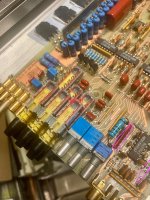
The guy at the repair shop , the expert I mentioned before said the amp turns on, green light is on but removing the remote wire
won't turn it off. It goes in protect mode with the red light. To save time and hopefully my amp as well, I told him I'll ask here on this group.
Now he tries to find out what are these parts for. I marked them with pink color. One is burned black so we cannot identify the values or whatever is
written on it. The second one where the numbers are clear theres no result when I search for it in the web. I've tried
with similar 8pin yellow color ones, just above those brown he removed. I see Korean network resistor but different values.
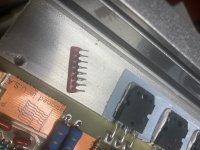
Can you help identify that part? What can cause that amp to stay on after the remote switch off? What he can check or look for in this case? He
asked me for a schematic but I have only the manuals printed. Also he was right about the ground problem in my car, here's how the ground wire looked
like before I took all the old stuff out and replaced with heavy welding cables
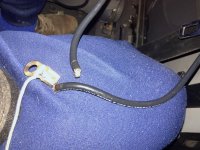
"very good condition and running". First install I had that wrong sound from the speakers, minute after ---
the smell from the trunk so we cut of the power removed it and I took it home. Curious if any damage can be visible, I looked
inside and noticed one resistor lifted up and the same one opposite burned on both ends. It's on first two pics:
.


Took it to audio repair expert and after few weeks he fixed it. Replaced the resistors and he got rid of the dust from the inside of the amp.
Back to my man who was doing the install. Couple hours later he called and said that this time it's toasted for real. Before the install I asked him
to check simply with 12v power supply in his workshop. We were able to play the music, green light was on and it switched off without problems.
I looked inside again, the smell was really strong and it looked like charred bomb site. 2nd pair of pics:


Took it again to the expert where he said that it looks like I have some issue with the ground wire. He mentioned that before at the first repair
and didn't even see the car......Now 3 months after I went there to see it and again the same resistors are replaced: ( now I know these are 10ohm
shield resistors).

The guy at the repair shop , the expert I mentioned before said the amp turns on, green light is on but removing the remote wire
won't turn it off. It goes in protect mode with the red light. To save time and hopefully my amp as well, I told him I'll ask here on this group.
Now he tries to find out what are these parts for. I marked them with pink color. One is burned black so we cannot identify the values or whatever is
written on it. The second one where the numbers are clear theres no result when I search for it in the web. I've tried
with similar 8pin yellow color ones, just above those brown he removed. I see Korean network resistor but different values.

Can you help identify that part? What can cause that amp to stay on after the remote switch off? What he can check or look for in this case? He
asked me for a schematic but I have only the manuals printed. Also he was right about the ground problem in my car, here's how the ground wire looked
like before I took all the old stuff out and replaced with heavy welding cables

New project: modular speakers +sub (for stereo music)
Several years ago I made quite an investment in a DIY pair of fairly large 3-way speakers, based around Scanspeak 6" and 10" revelators and a tweeter in a Pellegrene waveguide. Then turbulent times hit and I suddenly found myself in a tiny flat, in which they could barely be stored - let alone used sensibly. However, I kept the drivers and am beginning to come up with a new plan for them:
The aim is to make things much more flexible this time, to account for wherever I'm living over the next several years or more. So the 6" and tweeters will form a pair of small sealed 2-ways that I can use almost anywhere in their own right. They will then be joined by either a new subwoofer, or else mounted on a pair of separate bass cabinets using the 10" drivers (to make them effectively 3-ways again). Should space etc permit at any point, then it could all be set up at once, as 3-ways+sub. I'm thinking active crossovers, that can be easily changed or switched-between to suit the different configurations.
The aim is to make things much more flexible this time, to account for wherever I'm living over the next several years or more. So the 6" and tweeters will form a pair of small sealed 2-ways that I can use almost anywhere in their own right. They will then be joined by either a new subwoofer, or else mounted on a pair of separate bass cabinets using the 10" drivers (to make them effectively 3-ways again). Should space etc permit at any point, then it could all be set up at once, as 3-ways+sub. I'm thinking active crossovers, that can be easily changed or switched-between to suit the different configurations.
TPA3116D2 breakout board
- By bogdan2011
- Class D
- 6 Replies
I wanted to play around with the 3116 and I couldn't find any TSSOP breakout boards, so I made one my own. I'm sharing the project if anyone wants to order boards themselves. There's not much to it except for some 1206 bypass caps.
Attachments
Searching Sony 2sb832 transistors
Hi!
i'm searching Sony 2sb832 transistors, 2-4 pcs. I found counterfeit, so NOS or used preferred 🙂
Thanks!
i'm searching Sony 2sb832 transistors, 2-4 pcs. I found counterfeit, so NOS or used preferred 🙂
Thanks!
Attachments
Best Options for making F-5 an Integrated Amp
I am looking to build an F-5 to go with Markaudio 10P Pensil speakers, and I would like to make the F-5 into an integrated amplifier. My source is Mac Mini/Macbook Air through a Micromega MyDAC.
I have seen the build that includes the Mesmerize buffer preamp in the same chassis as an F-5, and I was wondering what other options/alternatives folks have successfully built or designed to make an Integrated Amp using the F-5 curicuit boards as the amplifier stage. I would be interested in both active or passive/bufffer options.
Thanks in advance for your time and consideration.
I have seen the build that includes the Mesmerize buffer preamp in the same chassis as an F-5, and I was wondering what other options/alternatives folks have successfully built or designed to make an Integrated Amp using the F-5 curicuit boards as the amplifier stage. I would be interested in both active or passive/bufffer options.
Thanks in advance for your time and consideration.
Dynaudio 17W75-XL and D28/2 Crossover and bass reflex help
Hi everyone,
i am in the middle of a project and i want some help with the crossover design and the bass reflex size. I have currently designed the enclosure for the speakers based on the dynaudios heritage special and the size of the contour 1.3 in which, i assume, the drivers came in from dynaudio.
The cabinet is 13.5 liters, subtracting the volume of the inside reinforcement piece and the speaker, and will be made from 20mm plywood. In the dynaudio dataset they have used a 15 liter enclosure with a 45mm x 80mm port for their measurements, should i use the same size port?
Regarding the crossover, i have found this thread and tested the referenced designs in Xsim, but i cant get a nice frequency response. I will attach the frd and zma files for the drivers. Can anyone help me with the design? I have uploaded a test based on the designs i have found on the thread.
i am in the middle of a project and i want some help with the crossover design and the bass reflex size. I have currently designed the enclosure for the speakers based on the dynaudios heritage special and the size of the contour 1.3 in which, i assume, the drivers came in from dynaudio.
The cabinet is 13.5 liters, subtracting the volume of the inside reinforcement piece and the speaker, and will be made from 20mm plywood. In the dynaudio dataset they have used a 15 liter enclosure with a 45mm x 80mm port for their measurements, should i use the same size port?
Regarding the crossover, i have found this thread and tested the referenced designs in Xsim, but i cant get a nice frequency response. I will attach the frd and zma files for the drivers. Can anyone help me with the design? I have uploaded a test based on the designs i have found on the thread.
Attachments
Enclosure design for a Beyma 5" Coaxial (5CX200ND)
- By suparub
- Full Range
- 0 Replies
Hi folks ! Long time here.
I have two cute Beyma drivers that are staying too long in their boxes and decided that it was time to breath life into them.
Before putting all the data into WinISD, Basta! or Hornresp, I was just wondering if anyone had a good design recommendation for them. I'm open to any compact (or less compact) vented or closed design. I also have the 2 way filter for each driver


Resources :
http://www.loudspeakerdatabase.com/Beyma/5CX200Nd_Nhttps://www.beyma.com/speakers/Fichas_Tecnicas/beyma-altavoces-hoja-tecnica-coaxial-5CX200NdN.pdfCute cube design I liked: Login to view embedded media
Thanks for your help !
I have two cute Beyma drivers that are staying too long in their boxes and decided that it was time to breath life into them.
Before putting all the data into WinISD, Basta! or Hornresp, I was just wondering if anyone had a good design recommendation for them. I'm open to any compact (or less compact) vented or closed design. I also have the 2 way filter for each driver
Resources :
http://www.loudspeakerdatabase.com/Beyma/5CX200Nd_Nhttps://www.beyma.com/speakers/Fichas_Tecnicas/beyma-altavoces-hoja-tecnica-coaxial-5CX200NdN.pdfCute cube design I liked: Login to view embedded media
Thanks for your help !
GlassWare Audio ACF Kit 12Vac buffer w/ JJ ECC99, poly caps and 1% metal film resistors NIB
- Swap Meet
- 4 Replies
SOLD SOLD SOLD SOLD SOLD SOLD SOLD SOLD SOSOLD SOLD LD
NIB GlassWare Audio 12 Vac buffer and x2 JJ ECC99 tubes, CDE 942 series 0.1uF & 1uF polypropylene capacitors, and 1% metal film resistors + User Guide.
Kit was $140. Asking $70 and $9 USPS Priority mail shipping to lower 48 USA only, please.
NIB GlassWare Audio 12 Vac buffer and x2 JJ ECC99 tubes, CDE 942 series 0.1uF & 1uF polypropylene capacitors, and 1% metal film resistors + User Guide.
Kit was $140. Asking $70 and $9 USPS Priority mail shipping to lower 48 USA only, please.
What is bidirectional USB Audio?
- By jan.didden
- Digital Source
- 18 Replies
I am looking for a Dirac Live! enabled piece of equipment and was looking at the miniDSP SHD studio.
But I'm not sure about one of the interfaces: the bidirectional USB interface.
What does that mean? Does it allow outputting the signal to a USB DAC?
Jan
But I'm not sure about one of the interfaces: the bidirectional USB interface.
What does that mean? Does it allow outputting the signal to a USB DAC?
Jan
Bassman 100 silverface - Pre/recording out..
- By peroejvind
- Tubes / Valves
- 9 Replies
I got a old bassman that i am wondering about how to implement a direct out in!.. Anyone in here who knows how to?
Resolved - Bug Squashed Article images missing
- By knutn
- Forum Problems & Feedback
- 5 Replies
Images missing in Article: Arpeggio Loudspeaker (https://www.diyaudio.com/community/threads/arpeggio-loudspeaker.158899/)
Dual EDS1000 and EDS1000-2 direct drive motor
- By Veeren
- Analogue Source
- 88 Replies
Dear all,
I thought I share some experience with the the Dual DD motors from the 1000 series.
When the Dual CS 701 came to market I was lucky enough to be working for the Dutch Dual importer.
I have repaired there numerous Dual and Perpetum Ebners , PE was around that time acquired by Dual.
For me it was a great move when Dual finally stopped making record changers and moved on to single disc players.
The changers where good but required a lot of maintenance and adjustment.
One of their main problems was the main bearing that was hollow in order to control the record stack mechanism.
More rumble from this type of bearing was unavoidable.
So very happy Dual dropped that for the CS701 and CS601.
Later I looked at the other DD motors from Dual and had high hopes for the CS704 which I bought many years ago but it does not compare favorably to the EDS 1000`s.
Not so much in construction but more in torque.
My first Dual CS 701 was sold a very long time ago , it had served me very well with an EMT TDS15 glued into its head shell.
The early EDS 1000 motors where problematic because the platter would move up and down while running, this was very quickly corrected although I do believe some made it to the market.
There was also a problem with the hall sensors that would go bad.
Had to repair quite a few of those which was not easy to do as the whole motor has to come apart in order to do that.
The newer EDS 1000-2 never had those problems and featured silicium transistors instead of germanium.
Recently I thought to do some service on my EDS 1000-2 motor, mainly the electrolytic capacitors as I thought they would have been aged so they would need replacement.
However when I had three of them out and on the meter it turned out quite different.
They where all like new and perhaps even better than the new ones I had bought, quite shocking in fact.
I tested them for ESR, capacity and V loss.
I did replace them anyway but a good lesson was learned.
A few words on the bearings of the EDS 1000-2 I have I did try a few different oils like the thicker oil (Renotack I think) Dual used and later some van den Hul zirconium doped bearing oil but none made it run better.
Reflecting on this I believe the bearings which are sintered bronze don`t need lubrication unless they stick.
A final note, the Dual CS701 platter sounds better than the one from the CS721, it is quite a bit heavier.
Have a good Sunday you all, regards Veeren
I thought I share some experience with the the Dual DD motors from the 1000 series.
When the Dual CS 701 came to market I was lucky enough to be working for the Dutch Dual importer.
I have repaired there numerous Dual and Perpetum Ebners , PE was around that time acquired by Dual.
For me it was a great move when Dual finally stopped making record changers and moved on to single disc players.
The changers where good but required a lot of maintenance and adjustment.
One of their main problems was the main bearing that was hollow in order to control the record stack mechanism.
More rumble from this type of bearing was unavoidable.
So very happy Dual dropped that for the CS701 and CS601.
Later I looked at the other DD motors from Dual and had high hopes for the CS704 which I bought many years ago but it does not compare favorably to the EDS 1000`s.
Not so much in construction but more in torque.
My first Dual CS 701 was sold a very long time ago , it had served me very well with an EMT TDS15 glued into its head shell.
The early EDS 1000 motors where problematic because the platter would move up and down while running, this was very quickly corrected although I do believe some made it to the market.
There was also a problem with the hall sensors that would go bad.
Had to repair quite a few of those which was not easy to do as the whole motor has to come apart in order to do that.
The newer EDS 1000-2 never had those problems and featured silicium transistors instead of germanium.
Recently I thought to do some service on my EDS 1000-2 motor, mainly the electrolytic capacitors as I thought they would have been aged so they would need replacement.
However when I had three of them out and on the meter it turned out quite different.
They where all like new and perhaps even better than the new ones I had bought, quite shocking in fact.
I tested them for ESR, capacity and V loss.
I did replace them anyway but a good lesson was learned.
A few words on the bearings of the EDS 1000-2 I have I did try a few different oils like the thicker oil (Renotack I think) Dual used and later some van den Hul zirconium doped bearing oil but none made it run better.
Reflecting on this I believe the bearings which are sintered bronze don`t need lubrication unless they stick.
A final note, the Dual CS701 platter sounds better than the one from the CS721, it is quite a bit heavier.
Have a good Sunday you all, regards Veeren
F2 pcb group buy...
- By Peter Daniel
- Group Buys
- 36 Replies
I'm opening this new thread as it seems like the offer for F2 boards has been lost within the original WTB inquiry.
The F2 amp board has a scoring line and is good for two channels.
Price for two channel pcb is USD$18, shipping included, paypal payment to my e-mail address posted here: http://audiosector.com/contact.asp
All boards will be shipped by airmail, with no tracking and no insurance and I cannot assume responsibility for lost packages. If you need insurance, please add $7 to your order.
The dual channel board is pictured below, output devices spacing is exactly as with F4, F5 and AJ pcbs, so the boards are interchangeable.
The matching power supply board available from this link: http://www.diyaudio.com/forums/showthread.php?t=149672
The F2 amp board has a scoring line and is good for two channels.
Price for two channel pcb is USD$18, shipping included, paypal payment to my e-mail address posted here: http://audiosector.com/contact.asp
All boards will be shipped by airmail, with no tracking and no insurance and I cannot assume responsibility for lost packages. If you need insurance, please add $7 to your order.
The dual channel board is pictured below, output devices spacing is exactly as with F4, F5 and AJ pcbs, so the boards are interchangeable.
The matching power supply board available from this link: http://www.diyaudio.com/forums/showthread.php?t=149672
Attachments
FS:ultimate attenuator kit for audio,balanced/single-end
This is a great KIT for those DIYers who want to build high-end quality audio DIY projects. It based on the following highlights:
R-2R current switching technology
High precision SMD resistors
High performance Analog switches DG413DY
Ultra-high performance Op-Amp AD797AR
Ultra-pure voltage regulator on board
Ultra-low noise
Ultra-low distortion
Low output impedance
Micro-controller with remote handset
4 input sources selectable
Wide range attenuation -96dB~0dB in 1dB/step
With this KIT, you can build a HI-END preamplifier easily ^_^
Price :
$250 single-end stereo
$450 balanced stereo
paypal accepted
airmail registered included
More information about my KITs ^_^
http://www.diyaudio.com/forums/swap-meet/135458-new-project-r-2r-attenuator-remote-control-v2.html
http://www.diyaudio.com/forums/swap-meet/144038-new-remote-volume-controller-10-sets.html
http://www.diyaudio.com/forums/swap-meet/130302-share-remote-volume-control-kit.html
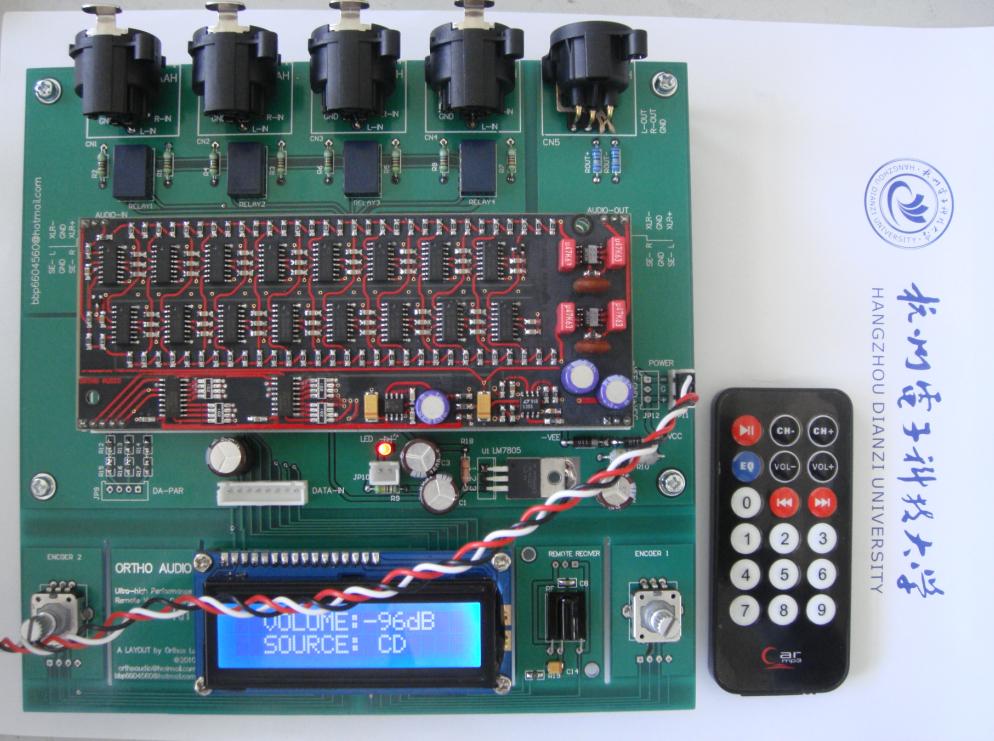
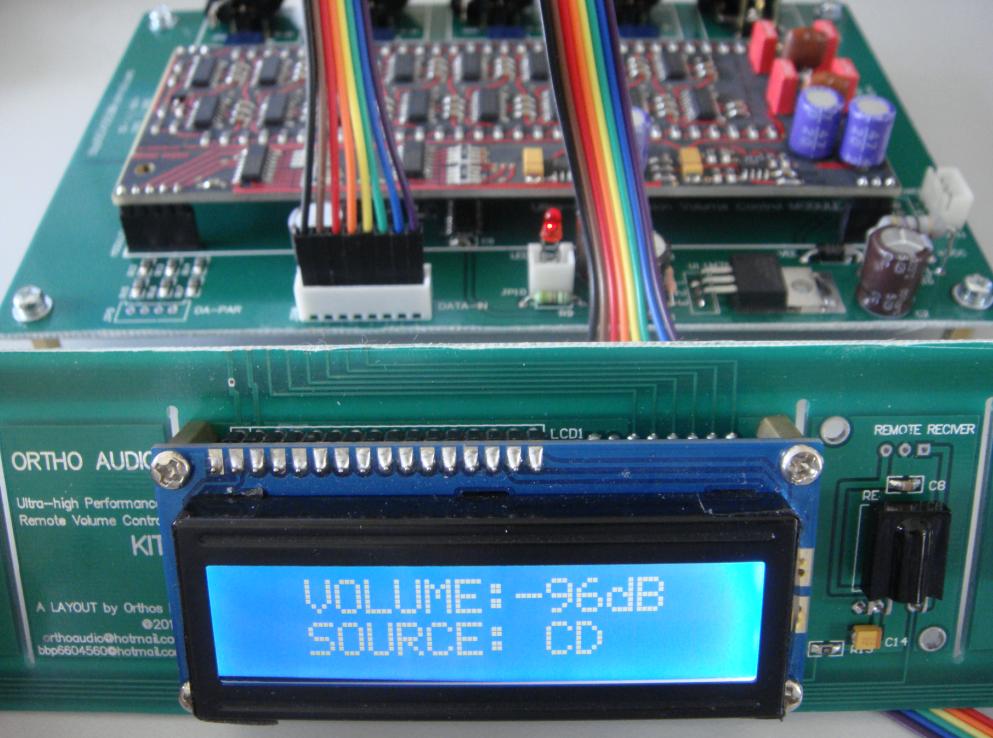
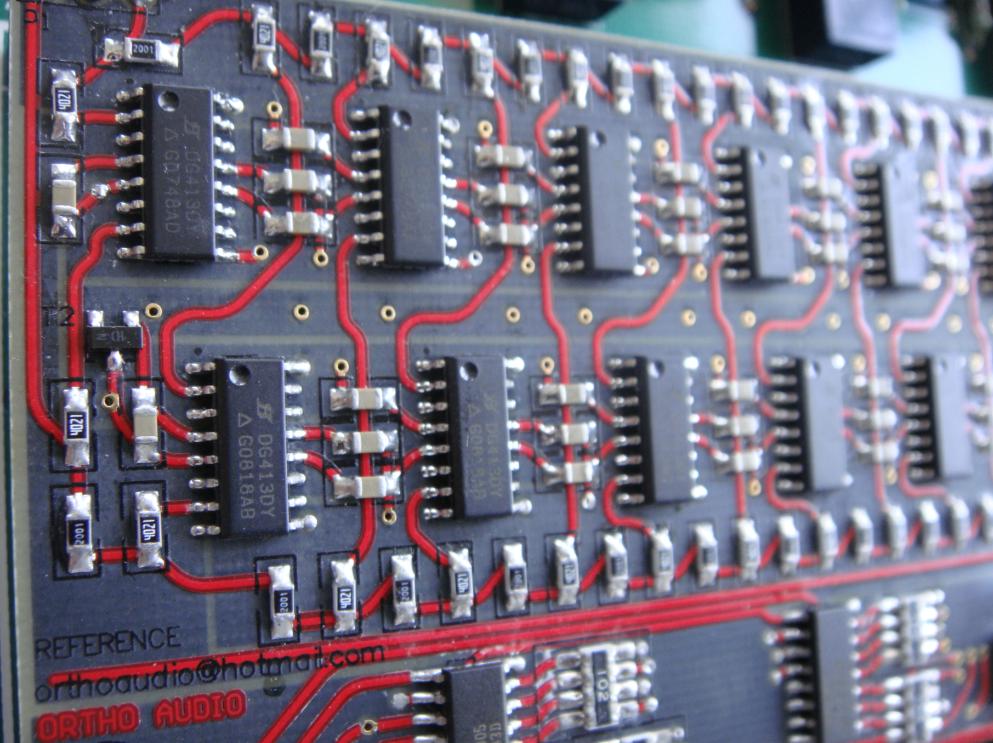
USER MANUAL is ready, drop me an email ^_^
bbp6604560 at hotmail.com
orthoaudio at hotmail.com
thanks
R-2R current switching technology
High precision SMD resistors
High performance Analog switches DG413DY
Ultra-high performance Op-Amp AD797AR
Ultra-pure voltage regulator on board
Ultra-low noise
Ultra-low distortion
Low output impedance
Micro-controller with remote handset
4 input sources selectable
Wide range attenuation -96dB~0dB in 1dB/step
With this KIT, you can build a HI-END preamplifier easily ^_^
Price :
$250 single-end stereo
$450 balanced stereo
paypal accepted
airmail registered included
More information about my KITs ^_^
http://www.diyaudio.com/forums/swap-meet/135458-new-project-r-2r-attenuator-remote-control-v2.html
http://www.diyaudio.com/forums/swap-meet/144038-new-remote-volume-controller-10-sets.html
http://www.diyaudio.com/forums/swap-meet/130302-share-remote-volume-control-kit.html
USER MANUAL is ready, drop me an email ^_^
bbp6604560 at hotmail.com
orthoaudio at hotmail.com
thanks
Attachments
WTB EIMAC 304TL TUBES
Let me know if you got Eimac 304TL to sell, NOS in box preferred, but lightly used also good for me.
Pay via Paypal is preferred, thanks.
Pay via Paypal is preferred, thanks.
My new 6v6 Tube Amp
- By sonic30
- Tubes / Valves
- 1 Replies
Greetings from Germany!
Here I would like to present my DIY tube amp for home hifi.
All Analog. Free wiring, own designed housing (Housing createted by myself, made by good Friend for cheap money in Poland).
Amazing!
Greets!
martin.
Here I would like to present my DIY tube amp for home hifi.
All Analog. Free wiring, own designed housing (Housing createted by myself, made by good Friend for cheap money in Poland).
Amazing!
Greets!
martin.
Attachments
-
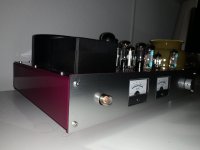 B9A053E7-C64E-47E4-9DA1-B00B3CE6A059.jpeg224.4 KB · Views: 179
B9A053E7-C64E-47E4-9DA1-B00B3CE6A059.jpeg224.4 KB · Views: 179 -
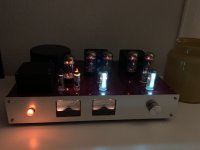 52AF1E26-2624-4B30-BFC2-9668B3A528C3.jpeg252.9 KB · Views: 178
52AF1E26-2624-4B30-BFC2-9668B3A528C3.jpeg252.9 KB · Views: 178 -
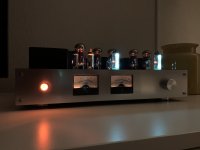 CA59C668-C71A-4631-B741-C82EF591AA0B.jpeg231.2 KB · Views: 180
CA59C668-C71A-4631-B741-C82EF591AA0B.jpeg231.2 KB · Views: 180 -
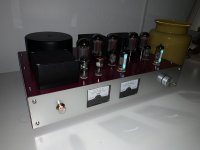 CA920AF6-F96D-43AE-8D10-CDDF54942295.jpeg215.1 KB · Views: 166
CA920AF6-F96D-43AE-8D10-CDDF54942295.jpeg215.1 KB · Views: 166 -
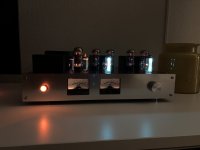 F332379C-9208-4A8D-BD62-27524518C2BB.jpeg231 KB · Views: 174
F332379C-9208-4A8D-BD62-27524518C2BB.jpeg231 KB · Views: 174
Chassis ground tube amp.
- By santitrucco
- Tubes / Valves
- 3 Replies
Hi.
Somebody know, why when i put music in my tube amp with my notebook and an the external audio board, there is voltage when i touch the case of my computer?
And, when i connect the third wire from the power cable to the amplifier chassis the Jump the Breaker security key.. As long as I don't connect the third wire to ground the amplifier works fine...
Somebody know, why when i put music in my tube amp with my notebook and an the external audio board, there is voltage when i touch the case of my computer?
And, when i connect the third wire from the power cable to the amplifier chassis the Jump the Breaker security key.. As long as I don't connect the third wire to ground the amplifier works fine...
Schematic needed:MFA Magus B
- By KBK
- Tubes / Valves
- 57 Replies
will pay - I simply just need one.
Blew some now unidentifiable resistors.......long story.
Haven't talked to the (Bruce) Moore guys yet, but prior comments from multiple sources on the Moore company frontman's 'social etiquette'...leads me to believe that I'm not likely to.
Blew some now unidentifiable resistors.......long story.
Haven't talked to the (Bruce) Moore guys yet, but prior comments from multiple sources on the Moore company frontman's 'social etiquette'...leads me to believe that I'm not likely to.
question about box for peavey woofers
- By eric77
- Subwoofers
- 3 Replies
Hello,
I have 2 peavey 15" woofers from PRO Sub MK II cabinets, is it worth to use thows elements to build something better than the original boxes, scoops, horns etc? or they are just to low spec drivers.
Just to explain why i would like to do somthing like this: i just have them laying around and now i have to sit home in quarantine with covid for 10 days so would be nice to construct something intresting + i love wood working projects 🙂
All the best
I have 2 peavey 15" woofers from PRO Sub MK II cabinets, is it worth to use thows elements to build something better than the original boxes, scoops, horns etc? or they are just to low spec drivers.
Just to explain why i would like to do somthing like this: i just have them laying around and now i have to sit home in quarantine with covid for 10 days so would be nice to construct something intresting + i love wood working projects 🙂
All the best
Turning a 6.3 V secondary into a 5 V secondary on an Antek 2T350
- By tomchr
- Tubes / Valves
- 31 Replies
Folks,
I figured I'd share... Transformers are not exactly rocket science, but some people seem to be a little intimidated by them.
I have an Antek 2T350 that I intend to use for a project involving 5AR4 rectifiers. These rectifiers have a 5 V filament. The trafo provides 6.3 V. What to do...
Option #1: Insert a 0.68 ohm resistor in series with the 5AR4 filament. This drops 1.3 V across the resistor and voila, 5.0 V across the filament. However, it also dissipates about 2.5 W in the resistor which will need to be gotten rid of.
Option #2: Unwind the secondary a little bit to change the turns ratio from 120:6.3 to 120:5.
I opted for the latter on this project. I counted 21 turns on the secondary. So a little back of the envelope math:
6.3/21 = 0.3 V per turn
5/0.3 = 16.7 turns
So to get a 5.0 V winding, I'd have to make a 16.7 turn secondary. 17 turns aught to be close enough... So if I remove four turns from the existing secondary, the voltage should drop to 5 V (maybe slightly higher). So I set out to remove four turns...
It's quite straight forward. The tape end of the plastic film wrapped around the transformer is found and the tape is removed. Then the plastic film is carefully unwound enough to expose the secondary connections. Taking care not to nick the windings, an exacto/utility knife is used to cut back the adhesive tape wrapped around the core. Note how the ends of the two secondary windings are interleaved between a piece of card stock to ensure that they don't short out. Pay attention to the sequence of the wires. I removed two turns from each end of each winding. The turns are actually bunched up slightly at the termination point, so I could do this and still have the secondary evenly spaced across the circumference of the core. With the now 17-turn secondary, I measured the secondary voltage. I loaded the secondary with a 5AR4 rectifier for this measurement. At 115 V input, I measured 5.0 V. At 120 V, I measured 5.25 V. That's within the +/-10 % normally required for heater windings, so I decided to stop here.
The secondary wires were cut, the laquer scraped off with a knife (followed by an emory cloth polish), and the old secondary output wires were soldered on. Then the windings were secured with tape and the plastic film was wound back on.
The whole process took me about 90 minutes including photography. With the transformer completely assembled, the output voltage on the secondary was 5.2 V for 120 V input.
Pictures from the various stages of the process below.
~Tom
I figured I'd share... Transformers are not exactly rocket science, but some people seem to be a little intimidated by them.
I have an Antek 2T350 that I intend to use for a project involving 5AR4 rectifiers. These rectifiers have a 5 V filament. The trafo provides 6.3 V. What to do...
Option #1: Insert a 0.68 ohm resistor in series with the 5AR4 filament. This drops 1.3 V across the resistor and voila, 5.0 V across the filament. However, it also dissipates about 2.5 W in the resistor which will need to be gotten rid of.
Option #2: Unwind the secondary a little bit to change the turns ratio from 120:6.3 to 120:5.
I opted for the latter on this project. I counted 21 turns on the secondary. So a little back of the envelope math:
6.3/21 = 0.3 V per turn
5/0.3 = 16.7 turns
So to get a 5.0 V winding, I'd have to make a 16.7 turn secondary. 17 turns aught to be close enough... So if I remove four turns from the existing secondary, the voltage should drop to 5 V (maybe slightly higher). So I set out to remove four turns...
It's quite straight forward. The tape end of the plastic film wrapped around the transformer is found and the tape is removed. Then the plastic film is carefully unwound enough to expose the secondary connections. Taking care not to nick the windings, an exacto/utility knife is used to cut back the adhesive tape wrapped around the core. Note how the ends of the two secondary windings are interleaved between a piece of card stock to ensure that they don't short out. Pay attention to the sequence of the wires. I removed two turns from each end of each winding. The turns are actually bunched up slightly at the termination point, so I could do this and still have the secondary evenly spaced across the circumference of the core. With the now 17-turn secondary, I measured the secondary voltage. I loaded the secondary with a 5AR4 rectifier for this measurement. At 115 V input, I measured 5.0 V. At 120 V, I measured 5.25 V. That's within the +/-10 % normally required for heater windings, so I decided to stop here.
The secondary wires were cut, the laquer scraped off with a knife (followed by an emory cloth polish), and the old secondary output wires were soldered on. Then the windings were secured with tape and the plastic film was wound back on.
The whole process took me about 90 minutes including photography. With the transformer completely assembled, the output voltage on the secondary was 5.2 V for 120 V input.
Pictures from the various stages of the process below.
~Tom
Attachments
Orion xtr 2000.2 output transistors
Good day ppl,
I got in an Orion XTR2000.2 amplifier on the bench, its got shorted output transistors, and a burnt PS. There's a serious mix of components in here, The smaller XTRs I worked on all used TIP35/36 with TIP41/42 drivers.
Anyone knows the correct part numbers for the heat sink mounted components?
I got in an Orion XTR2000.2 amplifier on the bench, its got shorted output transistors, and a burnt PS. There's a serious mix of components in here, The smaller XTRs I worked on all used TIP35/36 with TIP41/42 drivers.
Anyone knows the correct part numbers for the heat sink mounted components?
F5 w/- 32v rail questions
Hi,
I'm upping the rails on my F5 to 32V (600VA 24v transfo) and have read the F5 Turbo manual where it says I've to also consider increasing R9 through to R12 to 5 watt, I intend changing these.
I'm a little confused though. If I only up the rails to 32V and change R9 through R12 to 5 watt, will this configuration alone still be capable of driving loads down to 2 ohm without burping?
Whats throwing me is I've read elsewhere that a stock F5 wont burp driving loads down to 2ohm, but in the F5 Turbo manual it goes onto asking "Want to drive 4 ohms with this? You can do it, but I recommend that you consider the upgrade to the F5 Turbo V1". However, the V1 also has the limiters removed and an additional set of output devices.
So where do I stand with loads down to 2 ohm if I only increase the rails to 32V and change R9 through R12 to 5 watt please?
If your wondering why I'm going with a "600VA".. I'm planning further upgrades later but for now I prefer to stage things up to be sure heat with my enclosure sinks doesn't catch me out... I wanna play with bias along the way
Many Thanks
I'm upping the rails on my F5 to 32V (600VA 24v transfo) and have read the F5 Turbo manual where it says I've to also consider increasing R9 through to R12 to 5 watt, I intend changing these.
I'm a little confused though. If I only up the rails to 32V and change R9 through R12 to 5 watt, will this configuration alone still be capable of driving loads down to 2 ohm without burping?
Whats throwing me is I've read elsewhere that a stock F5 wont burp driving loads down to 2ohm, but in the F5 Turbo manual it goes onto asking "Want to drive 4 ohms with this? You can do it, but I recommend that you consider the upgrade to the F5 Turbo V1". However, the V1 also has the limiters removed and an additional set of output devices.
So where do I stand with loads down to 2 ohm if I only increase the rails to 32V and change R9 through R12 to 5 watt please?
If your wondering why I'm going with a "600VA".. I'm planning further upgrades later but for now I prefer to stage things up to be sure heat with my enclosure sinks doesn't catch me out... I wanna play with bias along the way
Many Thanks
WTB Audio Note 4300E (300B) power tube pair
Looking for a pair of Audio Note 4300E (300B) power tubes. Let me know what you have and what you are asking for them. Thanks.
F.S. ATB PC PRO #2 Brand new. Cheap.
- By Jeffrey 01
- Swap Meet
- 1 Replies
Good morning. After trying to install this program on my computer I see it is never going to work. Now I need a new computer so am selling the program. I bought the vibration sensor as well. I have everything it came with. I have not opened the microphone still in package and dvd and sound tone cd.This is a great deal and you can add on the PC Quality Test unit for further measurements of quality control and the rub and buzz test and more.
I bought from meniscus audio group (great guys to buy from). I can give you the original receipt. I paid $301.40. I will let it go for $250.00 and I will pay for shipping to the 48 United States. You can e mail me or pm me with any questions or concerns? Cheers Jeff
I bought from meniscus audio group (great guys to buy from). I can give you the original receipt. I paid $301.40. I will let it go for $250.00 and I will pay for shipping to the 48 United States. You can e mail me or pm me with any questions or concerns? Cheers Jeff
ProAc 100 Crossover tweak; Scan speak 18W/8542-00 and new 18W/8542-10 .frd and .zma files?
- By weston530
- Equipment & Tools
- 0 Replies
Hi All
I am looking to potentially tweak the crossover of my ProAc Studio 100s. Reason being the new SS 18W/8452-10 replacement drivers make the entire speaker sound too different to me. (Perhaps I am crazy.)
Apart from maybe just tweaking the series resistor on the tweeter slightly to rebalance the drivers (perhaps misguided). I was hoping someone might have or could lead me to the FRD and ZMA files for these two drivers so I could play around a little in X-Sim to see what tweaks might help make the speaker sound more familiar with the new replacement drivers.
Any help appreciated, I am 100% a n00b in these arenas.
Dan
I am looking to potentially tweak the crossover of my ProAc Studio 100s. Reason being the new SS 18W/8452-10 replacement drivers make the entire speaker sound too different to me. (Perhaps I am crazy.)
Apart from maybe just tweaking the series resistor on the tweeter slightly to rebalance the drivers (perhaps misguided). I was hoping someone might have or could lead me to the FRD and ZMA files for these two drivers so I could play around a little in X-Sim to see what tweaks might help make the speaker sound more familiar with the new replacement drivers.
Any help appreciated, I am 100% a n00b in these arenas.
Dan
Amplifier & dsp boards & speaker drivers sale
- Swap Meet
- 24 Replies
Hey Guys,
I have various DIY parts and projects for sale & can ship within UK some parts, the bigger stuff buyer collects.
Can post photo's if you are interested i specific items, PM's please.
Loudspeaker drivers:
4 (2 pairs), unused apart from TS parameter testing. Seas Excel 8 inch Mag coned,Seas Excel W22EX/001 - E0022 8" Magnesium Cone Woofer - Your favorite one-stop-shop for DIY audio components - SoundImports
18 (9 pairs) Beyma, 5.5 inch broad band new, unopened box's https://www.beyma.com/speakers/Fichas_Tecnicas/000009589.pdf
12 (6 pairs) 7 Inch Peerless bass mid, unopened OEM spec ??!!
24 (12 pairs) CSS 4 inch Neo motor BMR. Rare, normally only available to OEMs in high volume.... Some unused brand new, most in test cabinets. All perfect working order. http://www.cotswoldsoundsystems.com/specifications/CSS_Specification_Sheet_BMR85DDXE_N4R_r1.pdf
Manger drivers: 4 drivers (2 pairs working well plus 3 drivers good for spare parts. These are Exotic beasts .... PM for details, no time wasters please..These are £1,000 each(!) new so no silly offers!
Beyma full range 3 inch, 8 drivers, unused unopened box. (4 pairs) LOUDSPEAKER 3"FR30 8 OH
1 Focal 11 inch Kevlar (yellow) coned driver. 11K 7512 Focal 11k7512 11" Polykevlar Woofer
Electronics:
Lyngdorf TDAI 2170 plus HDMI board plus USB input board plus A to D board. Great condition with measurement mic and stand. Boxed. High end beast! https://hometheaterreview.com/lyngdorf-audio-tdai-2170-integrated-amplifier-reviewed/
DEQX with custom case and Lithium Ion battery power supply, USB input. https://www.deqx.com/products/hdp-4/
Spare DEQX boards with sub boards.
4 First One Amplifier modules with optional cap boards. Brand new, unused. Set for 48 volt DC input. ideal for battery project.
Spare 150 watt Class D per channel power amp.
Benchmark 4 channel DAC module. Not sure what model... Its never been out the bubble wrap!
These are great.... 4 unused AKM A to D chips, AK 5397 EQ. Mint!
Loudspeaker cabinets
4 cabinets (2 pairs) Acrylic open baffle. Rebated driver cut outs for twin 8 inch Seas drivers matching above).
2 (1 pair) 12 litre sealed box 18mm MDF cabinets, nice metallic grey paint finish. Check out these beauties! http://www.michaelvalentinestudio.com/hi_fi/hc2006hifishow/picture24.php
Whole bunch of cables /interconnects and Cardas speaker terminals and silver spades, 20 meters of silver 0.8mm solid core cable plus teflon sleeve.
Cheers
Alex.
I have various DIY parts and projects for sale & can ship within UK some parts, the bigger stuff buyer collects.
Can post photo's if you are interested i specific items, PM's please.
Loudspeaker drivers:
4 (2 pairs), unused apart from TS parameter testing. Seas Excel 8 inch Mag coned,Seas Excel W22EX/001 - E0022 8" Magnesium Cone Woofer - Your favorite one-stop-shop for DIY audio components - SoundImports
18 (9 pairs) Beyma, 5.5 inch broad band new, unopened box's https://www.beyma.com/speakers/Fichas_Tecnicas/000009589.pdf
12 (6 pairs) 7 Inch Peerless bass mid, unopened OEM spec ??!!
24 (12 pairs) CSS 4 inch Neo motor BMR. Rare, normally only available to OEMs in high volume.... Some unused brand new, most in test cabinets. All perfect working order. http://www.cotswoldsoundsystems.com/specifications/CSS_Specification_Sheet_BMR85DDXE_N4R_r1.pdf
Manger drivers: 4 drivers (2 pairs working well plus 3 drivers good for spare parts. These are Exotic beasts .... PM for details, no time wasters please..These are £1,000 each(!) new so no silly offers!
Beyma full range 3 inch, 8 drivers, unused unopened box. (4 pairs) LOUDSPEAKER 3"FR30 8 OH
1 Focal 11 inch Kevlar (yellow) coned driver. 11K 7512 Focal 11k7512 11" Polykevlar Woofer
Electronics:
Lyngdorf TDAI 2170 plus HDMI board plus USB input board plus A to D board. Great condition with measurement mic and stand. Boxed. High end beast! https://hometheaterreview.com/lyngdorf-audio-tdai-2170-integrated-amplifier-reviewed/
DEQX with custom case and Lithium Ion battery power supply, USB input. https://www.deqx.com/products/hdp-4/
Spare DEQX boards with sub boards.
4 First One Amplifier modules with optional cap boards. Brand new, unused. Set for 48 volt DC input. ideal for battery project.
Spare 150 watt Class D per channel power amp.
Benchmark 4 channel DAC module. Not sure what model... Its never been out the bubble wrap!
These are great.... 4 unused AKM A to D chips, AK 5397 EQ. Mint!
Loudspeaker cabinets
4 cabinets (2 pairs) Acrylic open baffle. Rebated driver cut outs for twin 8 inch Seas drivers matching above).
2 (1 pair) 12 litre sealed box 18mm MDF cabinets, nice metallic grey paint finish. Check out these beauties! http://www.michaelvalentinestudio.com/hi_fi/hc2006hifishow/picture24.php
Whole bunch of cables /interconnects and Cardas speaker terminals and silver spades, 20 meters of silver 0.8mm solid core cable plus teflon sleeve.
Cheers
Alex.
Huge 2-way with 18" woofer and 2" exit compression driver?
I've been thinking about this for a while. Anyone ever do this? Could be used for personal home listening, parties, outdoors, DJing, small live gigs, etc.. a tough thing to pull off, but I'm wondering what the result would be like. I'm thinking one might end up with something that sounds very similar to the typical sound of a movie cinema, but perhaps sounding a lot bigger and better in the typical listening room, plus extra low-end from room gain and a better woofer/enclosure combo.
Also, I'm aware of the problems associated with a 2" exit compression driver running above 10 KHz, but I'm curious as to just how audible it'd really be. More than anything, I think the high directivity above 10 KHz and the resulting off-axis downward slope above 8-10 KHz as a result would be more problematic than anything. But I still wonder what it'd be like.
So, a single 18" serious pro sound woofer in a large vented enclosure with a 2" exit driver mated to a large pro sound horn, digitally crossed at 400-500 Hz, 8th order lowpass on the woofer and 4th order highpass on the compression driver.
For example, here are some of the specific components I've been eyeing:
Goldwood GM-450PB 2" High Frequency Horn
Peavey 18" Low Rider Subwoofer Speaker Driver
Peavey 18" Low Max Subwoofer Speaker Driver
Choice of compression driver is still very much up in the air.
Anyway, either of the above woofers would work well in 10^3 tuned to about 30 Hz, capable of 120-123 dB continuous @ 1m before Xmax starts coming into play. I'm curious though about the frequency response of these woofers, since Peavey never seems to list measurements. They state 500 Hz and 1 KHz, but I somehow doubt they're so limited. Inductance for both woofers is fairly low too, compared to other woofers in their class.
I've used these links below as a general idea of what to expect from such a 90 degree 2" exit horn and driver combo. These horns seem very similar to that cheap Goldwood I listed above:
http://prodance.cz/protokoly/RCF_H9040_DE750.pdf
http://prodance.cz/protokoly/fh2450_de750.pdf
Speaking of the Goldwood horn, P.Audio makes an identical one for a lot more money. I'd typically stay away and flat out ignore anything from Goldwood, but this 2" horn might turn out to be a really good value.
Anyway, just contemplating, and thought I'd inquire for any thoughts and experiences regarding such a project.
edit:
Also, my biggest issue with the above is the digital crossover, in regards to volume control. Is there still not a readily available volume control with XLR outputs for DCX2496 and the likes? Why the hell not??
Also, I'm aware of the problems associated with a 2" exit compression driver running above 10 KHz, but I'm curious as to just how audible it'd really be. More than anything, I think the high directivity above 10 KHz and the resulting off-axis downward slope above 8-10 KHz as a result would be more problematic than anything. But I still wonder what it'd be like.
So, a single 18" serious pro sound woofer in a large vented enclosure with a 2" exit driver mated to a large pro sound horn, digitally crossed at 400-500 Hz, 8th order lowpass on the woofer and 4th order highpass on the compression driver.
For example, here are some of the specific components I've been eyeing:
Goldwood GM-450PB 2" High Frequency Horn
Peavey 18" Low Rider Subwoofer Speaker Driver
Peavey 18" Low Max Subwoofer Speaker Driver
Choice of compression driver is still very much up in the air.
Anyway, either of the above woofers would work well in 10^3 tuned to about 30 Hz, capable of 120-123 dB continuous @ 1m before Xmax starts coming into play. I'm curious though about the frequency response of these woofers, since Peavey never seems to list measurements. They state 500 Hz and 1 KHz, but I somehow doubt they're so limited. Inductance for both woofers is fairly low too, compared to other woofers in their class.
I've used these links below as a general idea of what to expect from such a 90 degree 2" exit horn and driver combo. These horns seem very similar to that cheap Goldwood I listed above:
http://prodance.cz/protokoly/RCF_H9040_DE750.pdf
http://prodance.cz/protokoly/fh2450_de750.pdf
Speaking of the Goldwood horn, P.Audio makes an identical one for a lot more money. I'd typically stay away and flat out ignore anything from Goldwood, but this 2" horn might turn out to be a really good value.
Anyway, just contemplating, and thought I'd inquire for any thoughts and experiences regarding such a project.
edit:
Also, my biggest issue with the above is the digital crossover, in regards to volume control. Is there still not a readily available volume control with XLR outputs for DCX2496 and the likes? Why the hell not??
how much added passive cooling Hypex UCD and SMPS needed?
- By bobdebouwer
- Class D
- 2 Replies
Hi,
I've purchased 10 UCD400 OEM units which have a aluminium L bracket and a small (about 1cm high, 8x7cm) heatsink attached to it. 8 of those will be powered by one SMPS3KA400, another 2 in stereo by some chinese 600W smps.

Furthermore 2 standard UCD2K units (they have some limited cooling on the board) powered by 1 SMPS3KA700 for my stereo subwoofers.
Looking at pictures from other builds, I seldomly see added heatsinks for cooling on SMPS or on UCD400 units. UCD2K builds are more rare, but passive or active cooling is used more often. Reading the specifications though, they do recommend cooling of the unit. I would like to use passive cooling instead of active due to the noise.
The use will be for a home theatre, not at reference levels, so not running 'full blast'
I am wondering about cooling as I'm ordering cases for them (modu) and am contemplating either using the Sepante or Dissipante line. The Sepante line is a lot bigger inside, which gives plenty of options to add some cooling. They also have an option to add a fully ventilated top cover, which the dissipante does not have.
I used this online tool to calculate:
https://celsiainc.com/resources/calculators/heat-sink-size-calculator/According to this, a heatsink should be 5 cm high (fins, 8x8cm) for the UCD400 if using 300W. For the UCD2K consuming 500W it should be 10x15x5 (high). Especially for the SMPS I'm not sure if extra passive cooling is required. I'm leaning towards adding only 1 heatsink to the UCD2K. I would think this is sufficient (can cut in 2, one for each UCD2K)
https://www.audiophonics.fr/en/kits...lack-anodized-300x125x50mm-black-p-10871.html
I wonder about cooling:
Thanks a lot!
I've purchased 10 UCD400 OEM units which have a aluminium L bracket and a small (about 1cm high, 8x7cm) heatsink attached to it. 8 of those will be powered by one SMPS3KA400, another 2 in stereo by some chinese 600W smps.
Furthermore 2 standard UCD2K units (they have some limited cooling on the board) powered by 1 SMPS3KA700 for my stereo subwoofers.
Looking at pictures from other builds, I seldomly see added heatsinks for cooling on SMPS or on UCD400 units. UCD2K builds are more rare, but passive or active cooling is used more often. Reading the specifications though, they do recommend cooling of the unit. I would like to use passive cooling instead of active due to the noise.
The use will be for a home theatre, not at reference levels, so not running 'full blast'
I am wondering about cooling as I'm ordering cases for them (modu) and am contemplating either using the Sepante or Dissipante line. The Sepante line is a lot bigger inside, which gives plenty of options to add some cooling. They also have an option to add a fully ventilated top cover, which the dissipante does not have.
I used this online tool to calculate:
https://celsiainc.com/resources/calculators/heat-sink-size-calculator/According to this, a heatsink should be 5 cm high (fins, 8x8cm) for the UCD400 if using 300W. For the UCD2K consuming 500W it should be 10x15x5 (high). Especially for the SMPS I'm not sure if extra passive cooling is required. I'm leaning towards adding only 1 heatsink to the UCD2K. I would think this is sufficient (can cut in 2, one for each UCD2K)
https://www.audiophonics.fr/en/kits...lack-anodized-300x125x50mm-black-p-10871.html
I wonder about cooling:
- UCD400 uses much less power in idle, less than 10W, and is pretty efficient. Would the smallish heatsink be sufficient or should I add more cooling? I would put all of them on one L shaped aluminium bracket, so the heatsinks would be connected and thus 'shared'.
- UCD2K uses more power in idle, 35W, so will get hotter even if not used. Would adding a heatsink be needed for subwoofer use?
- SMPS3K power units: is the onboard cooling sufficient? They will be pushing quite some boards, 70-80W in idle and 2-3kw in full use all channels, though realistically in continuous use it will be about 1000W in normal use.
- Case height. The UCD400 is only 8 cm high (on its side), so a 3U case has 12cm height and thus 4cm 'clearance'. The UCD2K is 11cm high on it's side, so only 1cm clearance in 3U case. Should I go to a 4U case and put it on it's side, or put it 'flat' and add a 'L' so I can add the heatsink on the side? The footprint in the case would be quite large in that case, 20x11cm (heatsink 5cm) compared to 14x9 if put on it's side (but higher!).
Thanks a lot!
Load more
Projects by fanatics, for fanatics
Get answers and advice for everyone wanting to learn the art of audio.
Join the Community
507,802
Members
7,889,039
Messages
